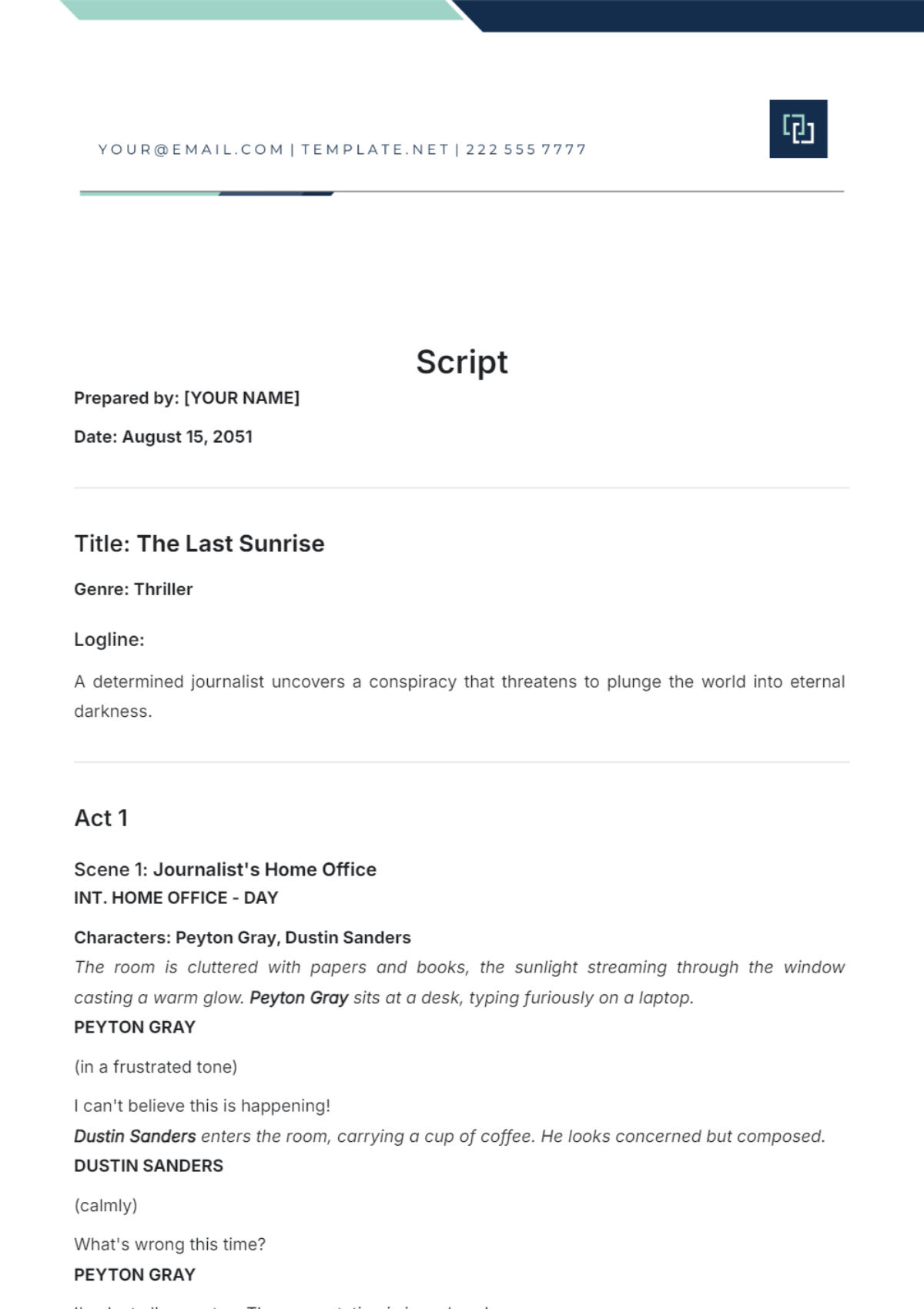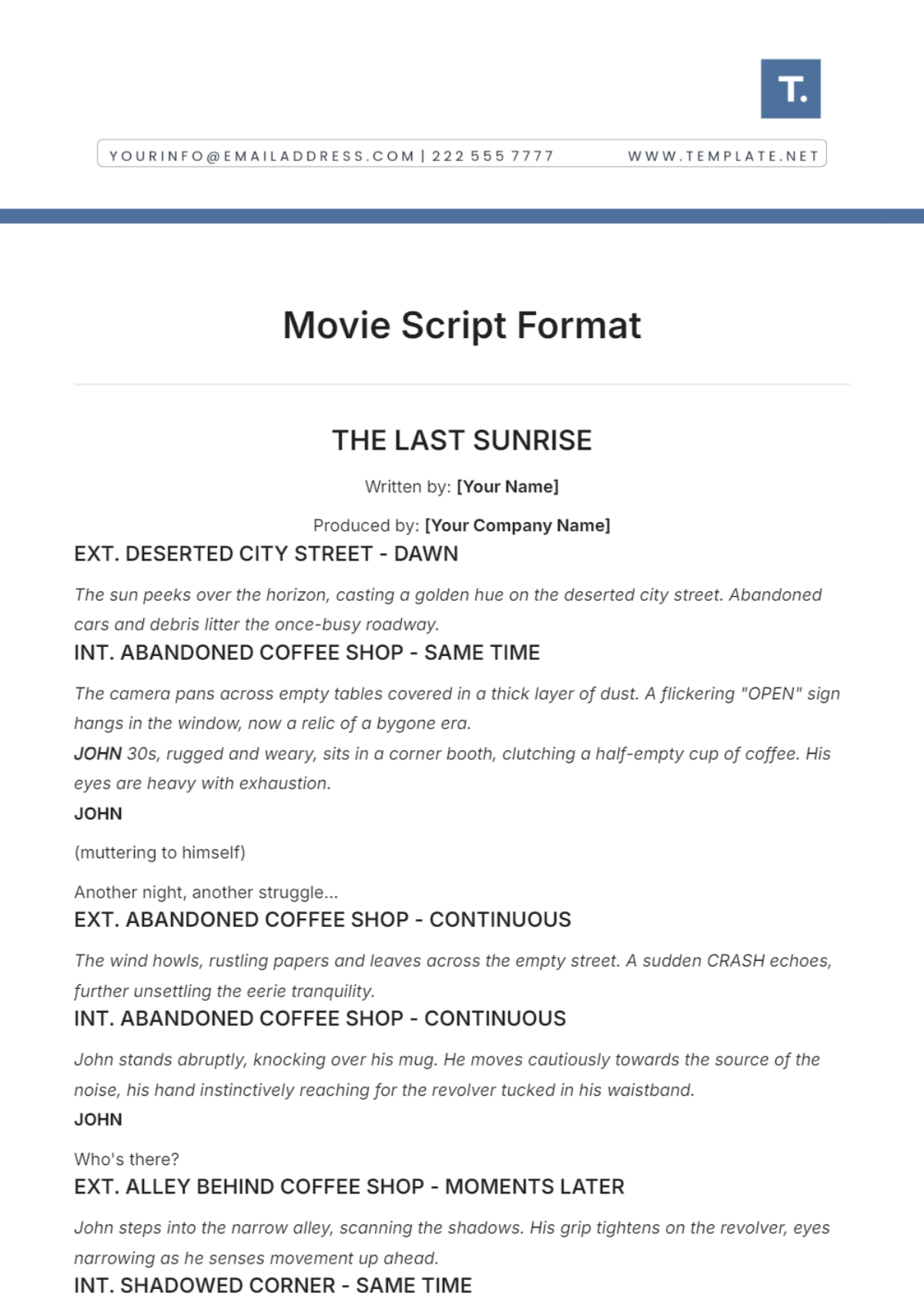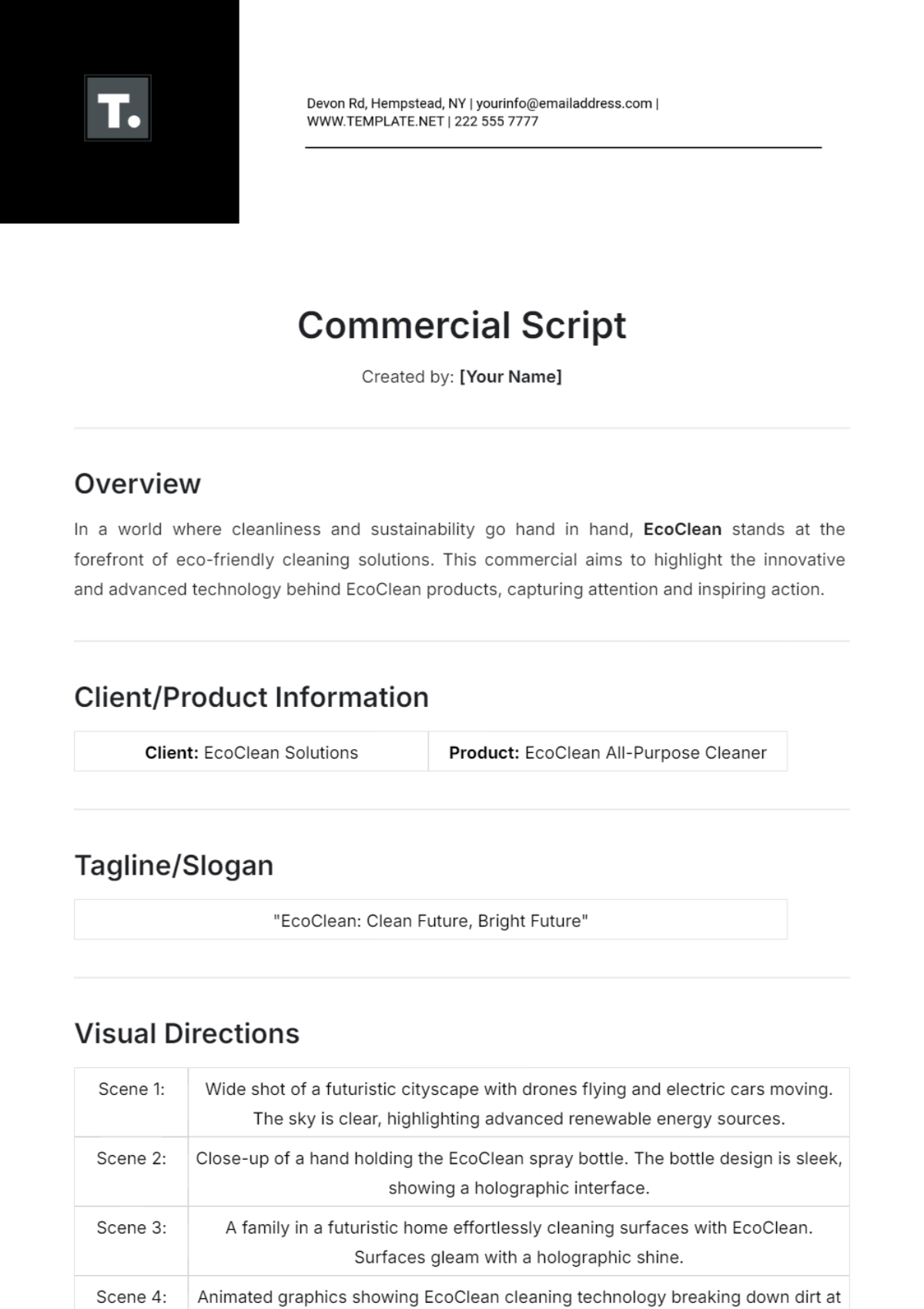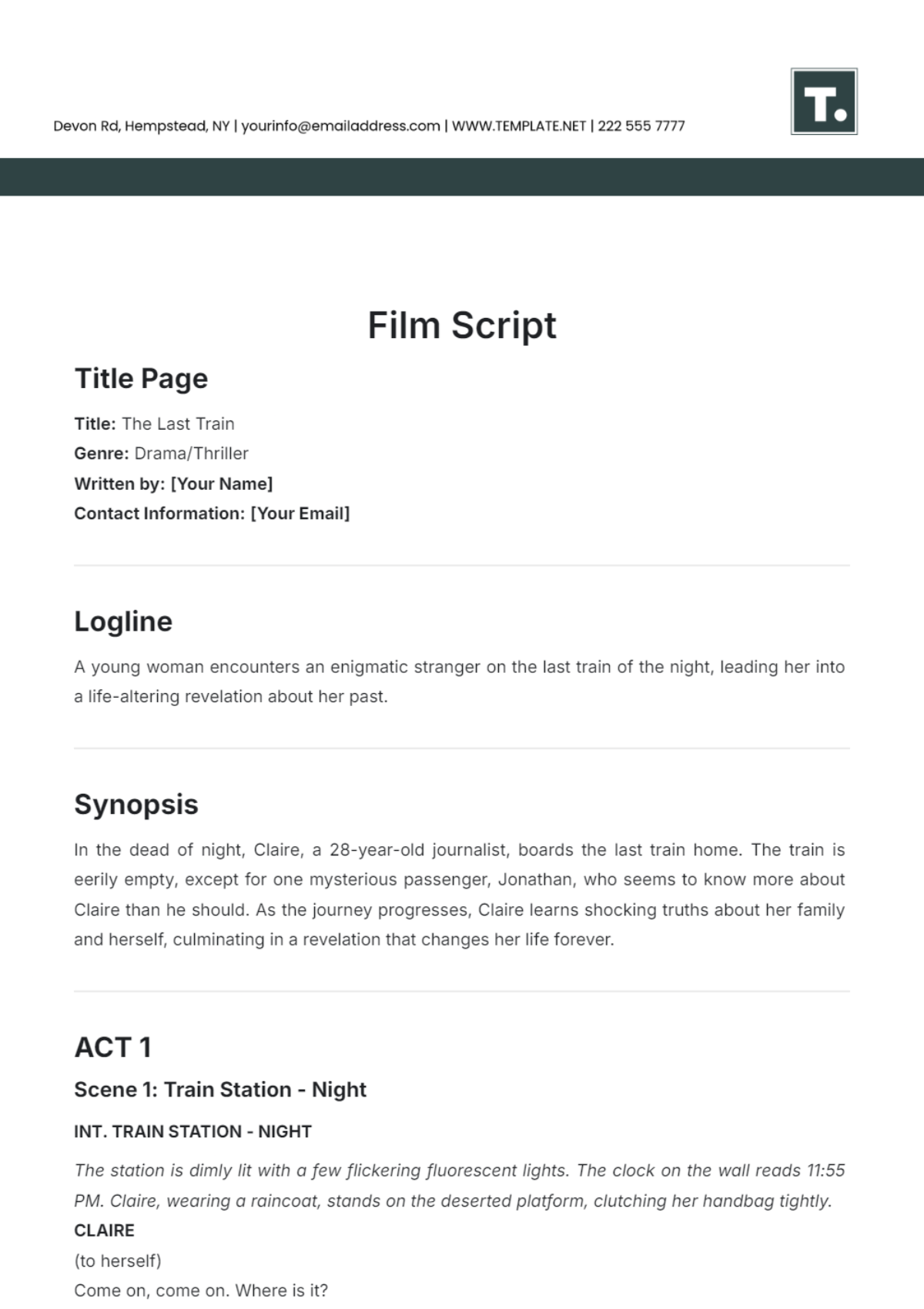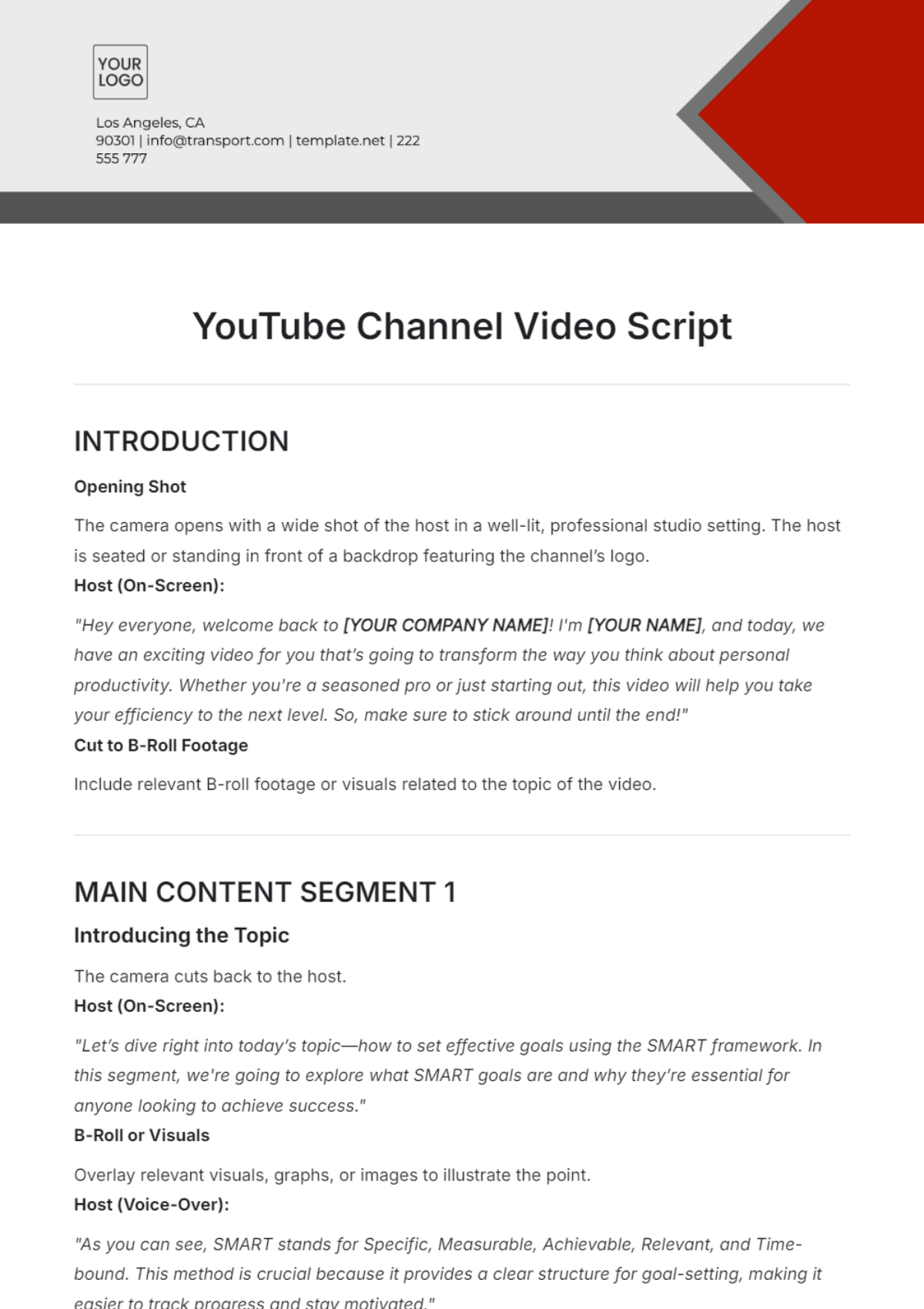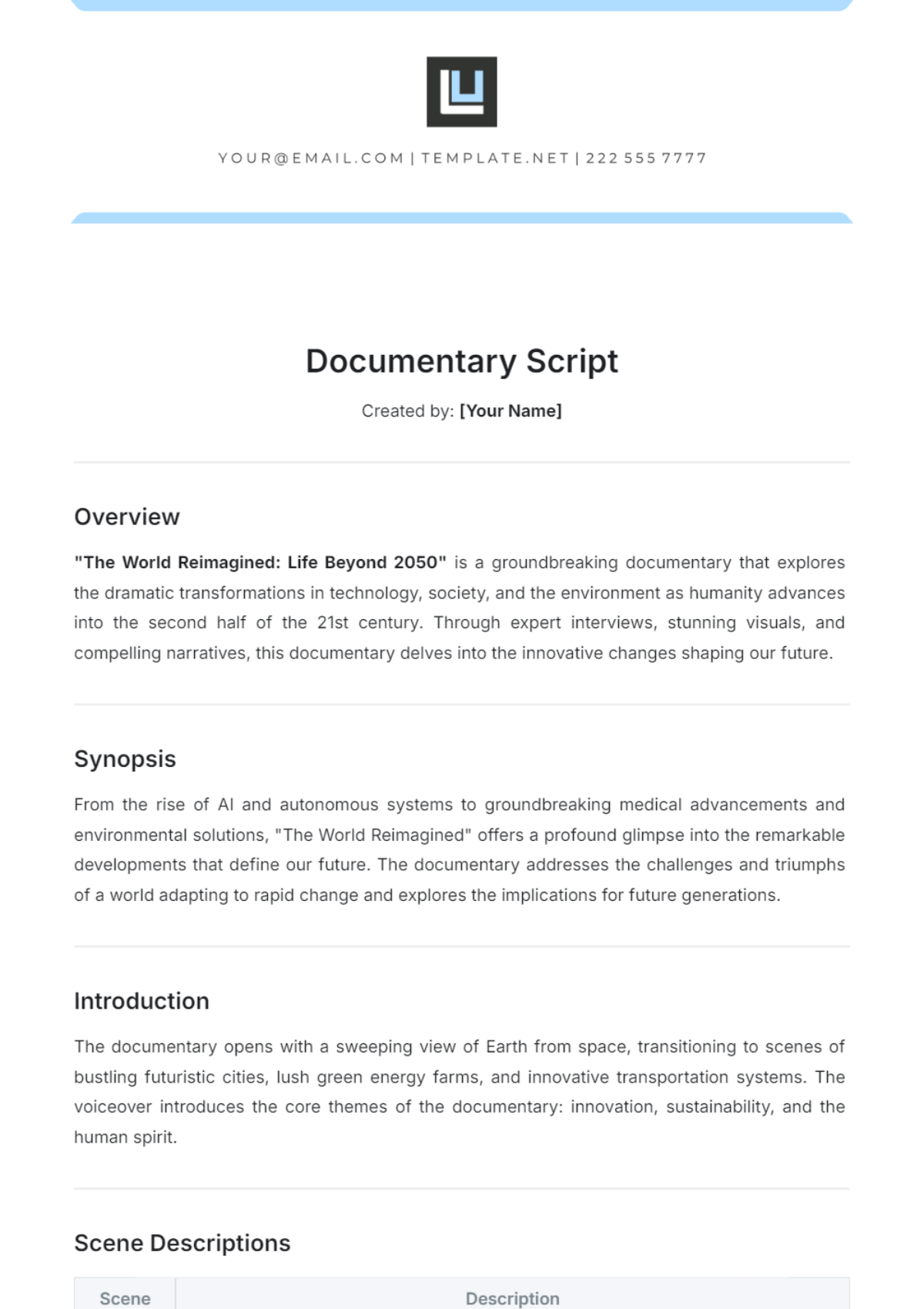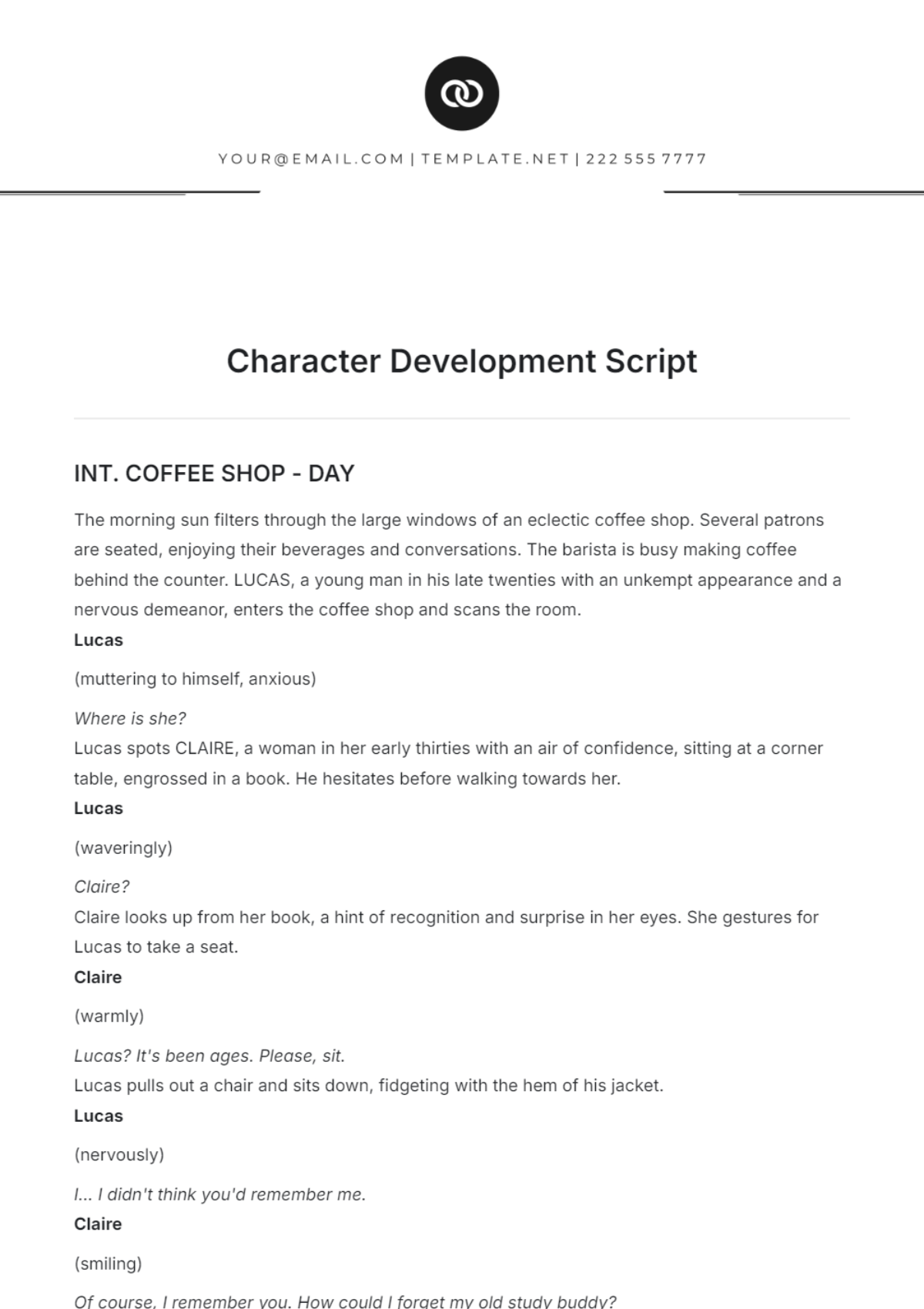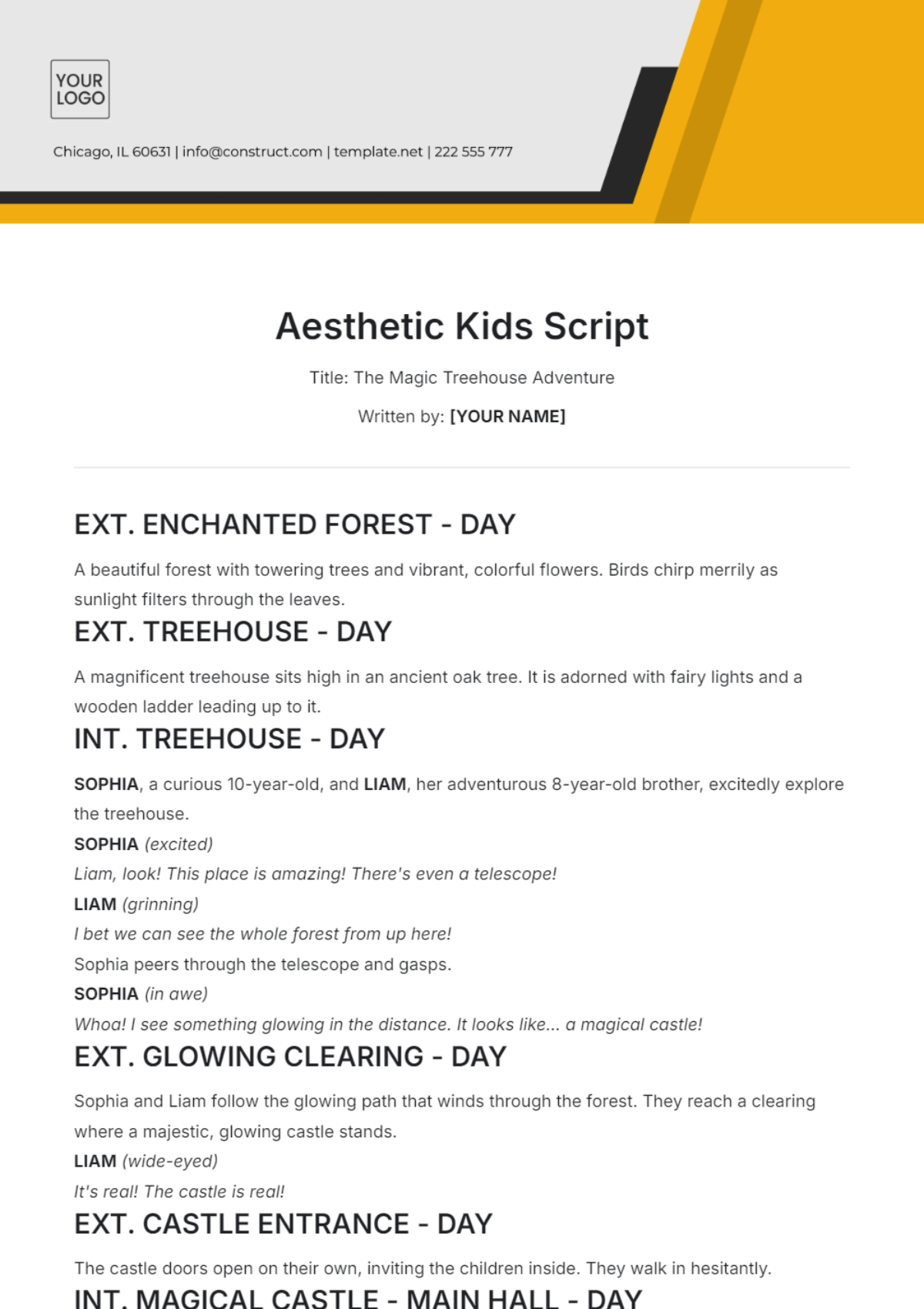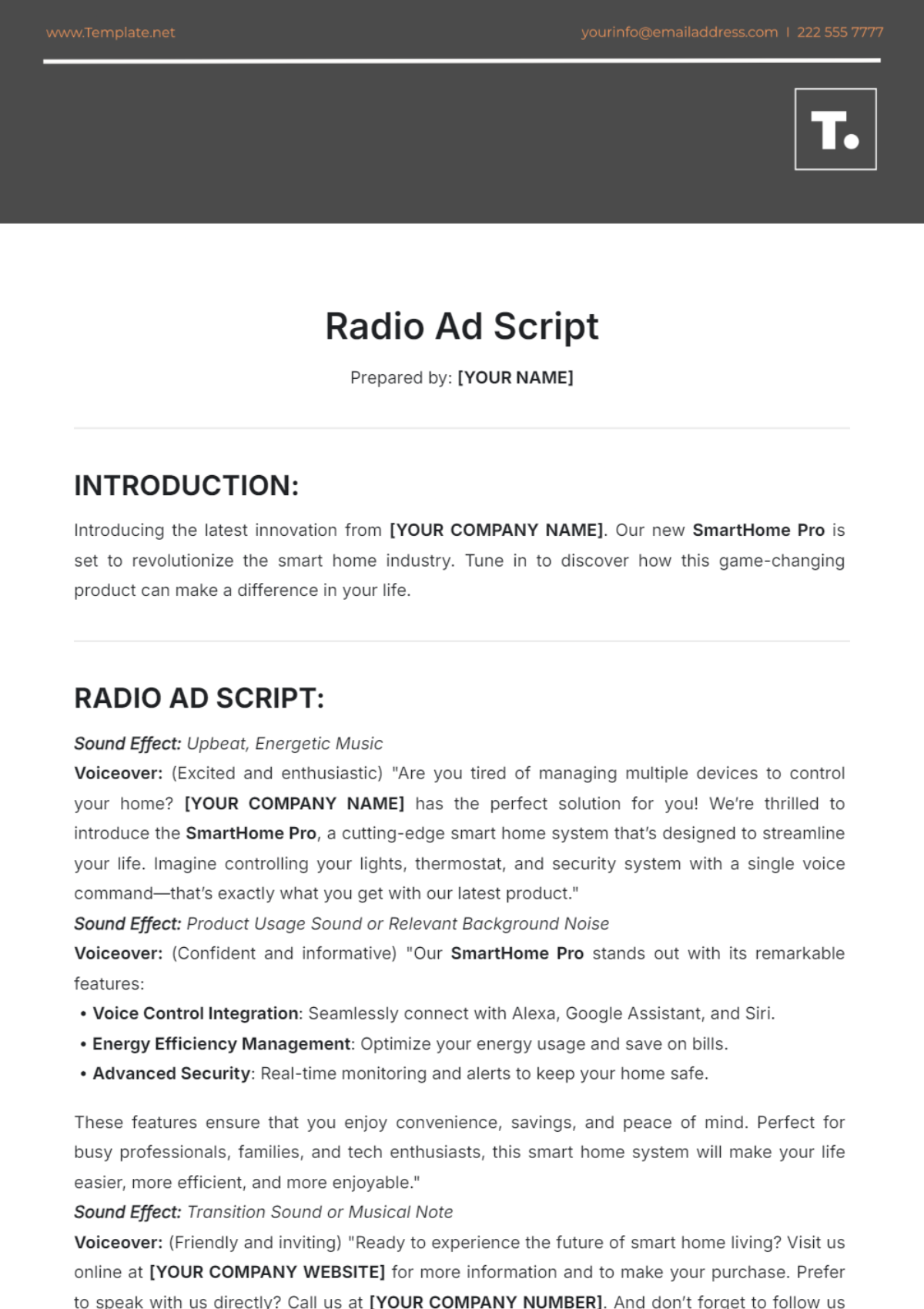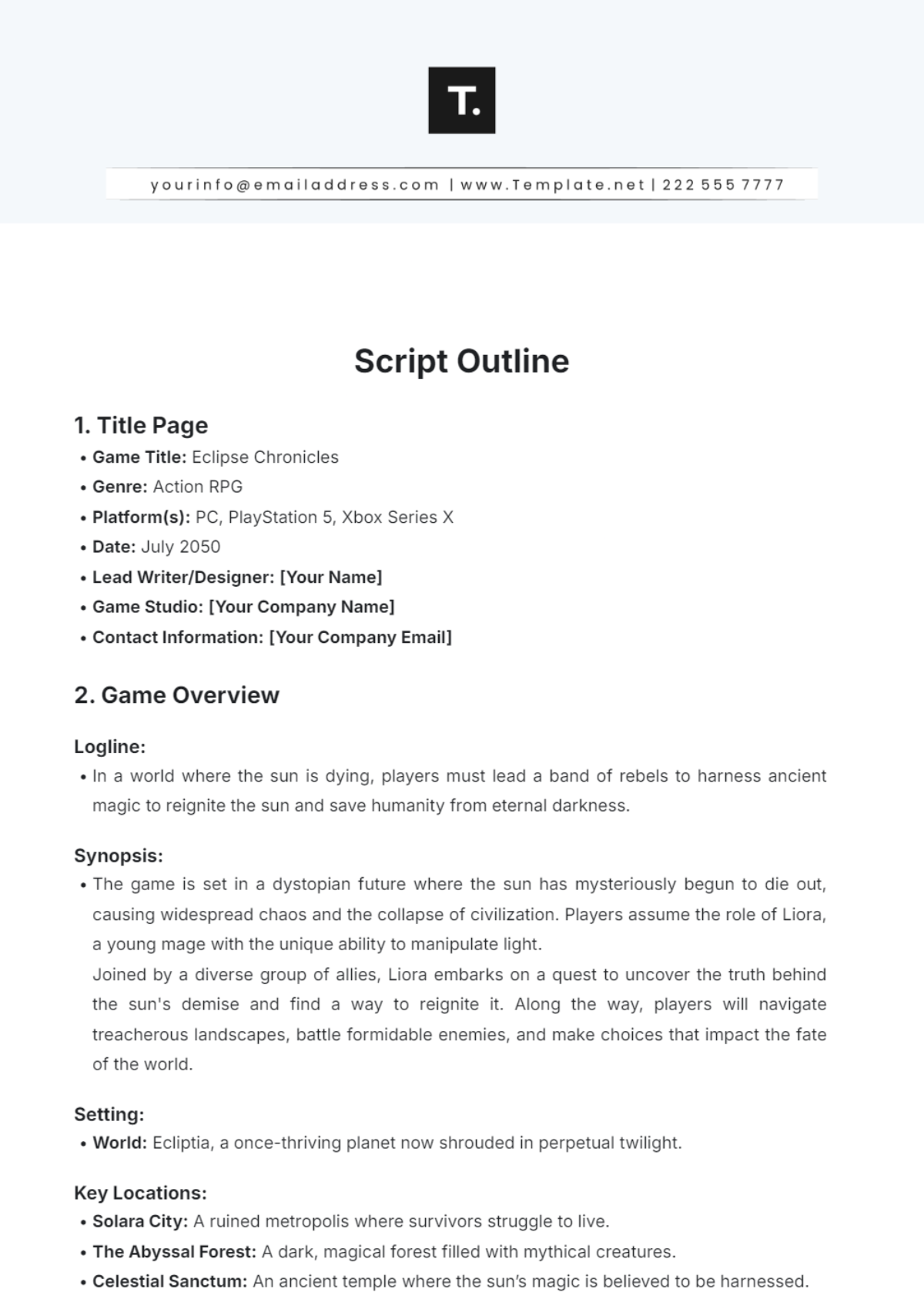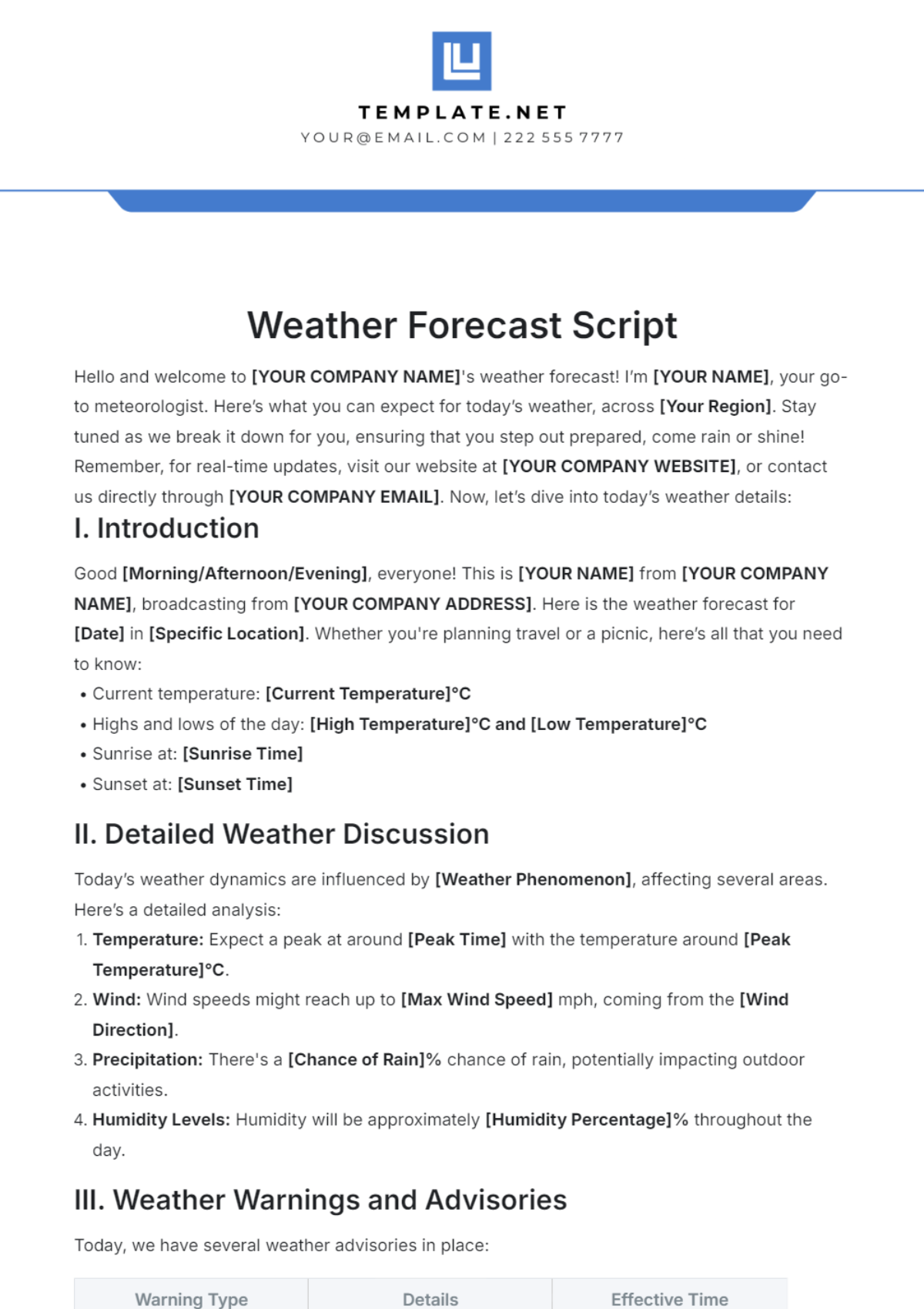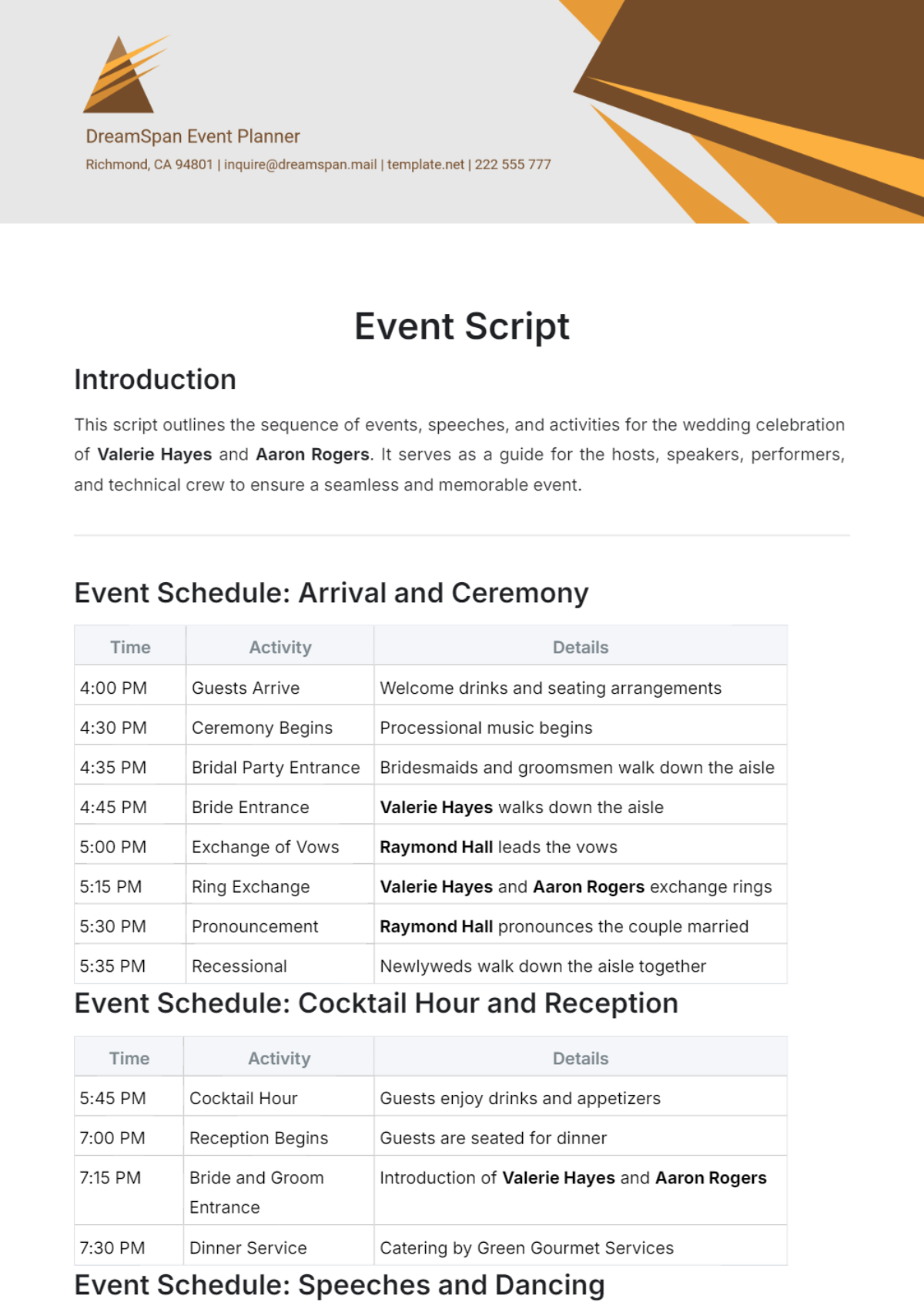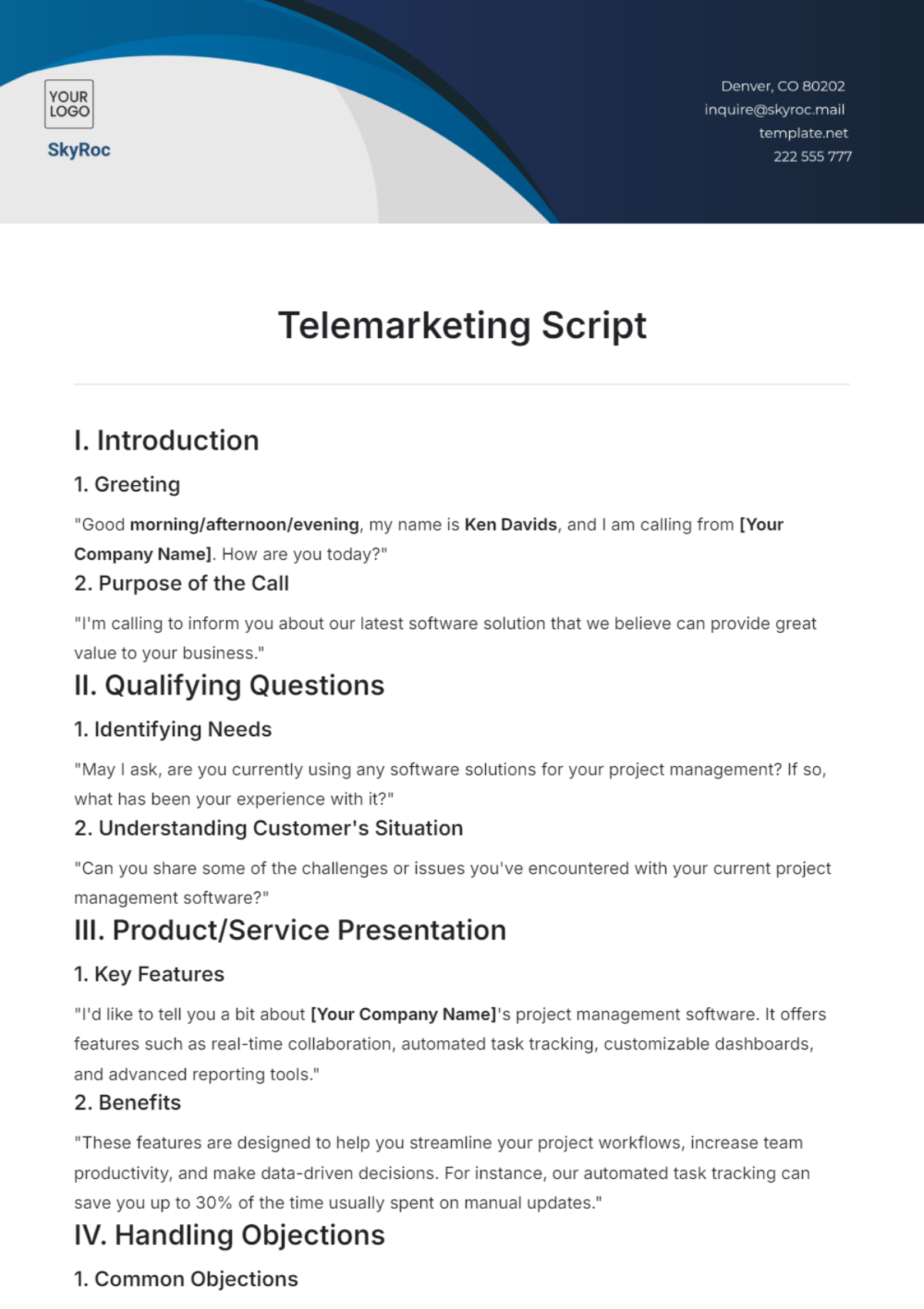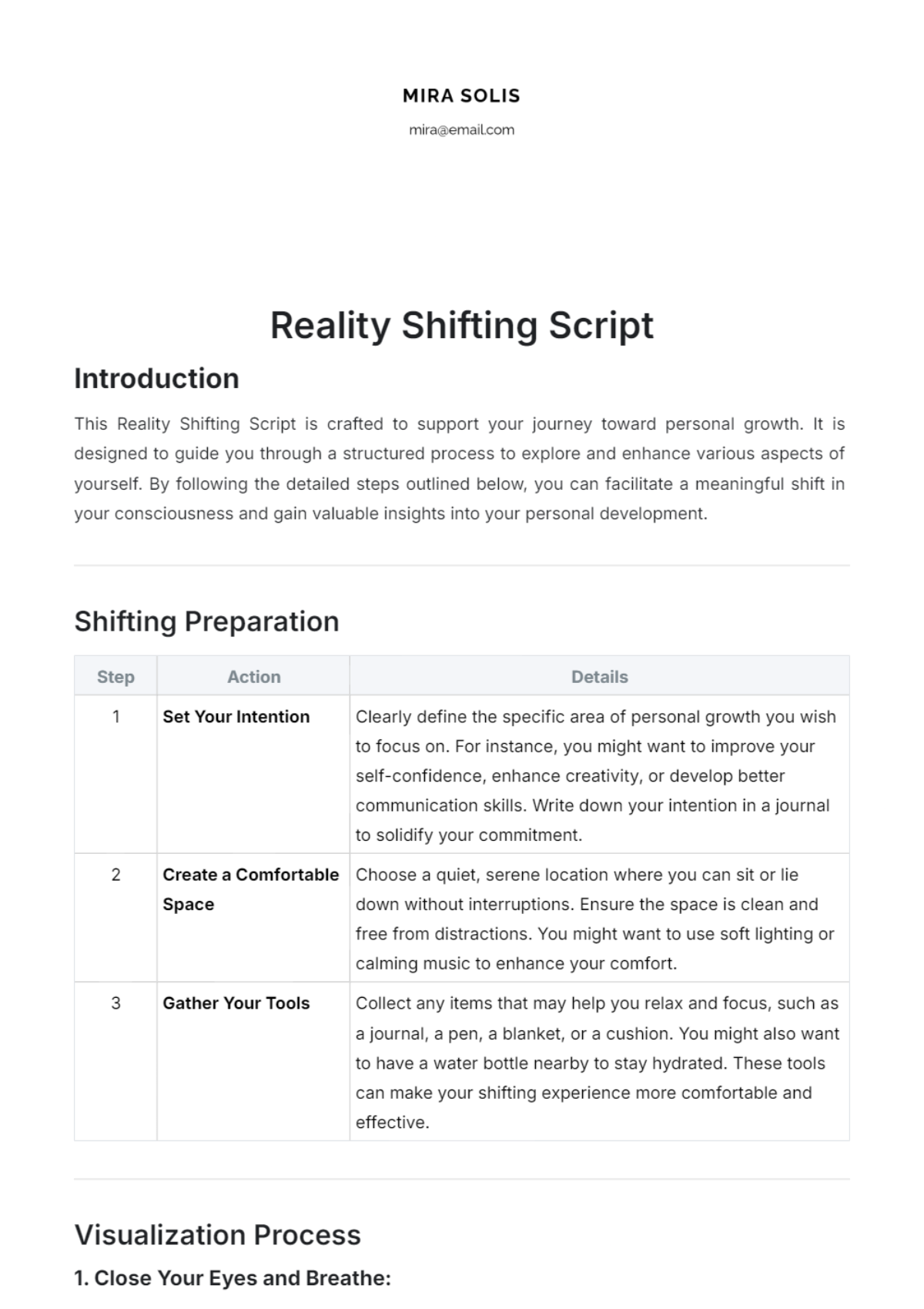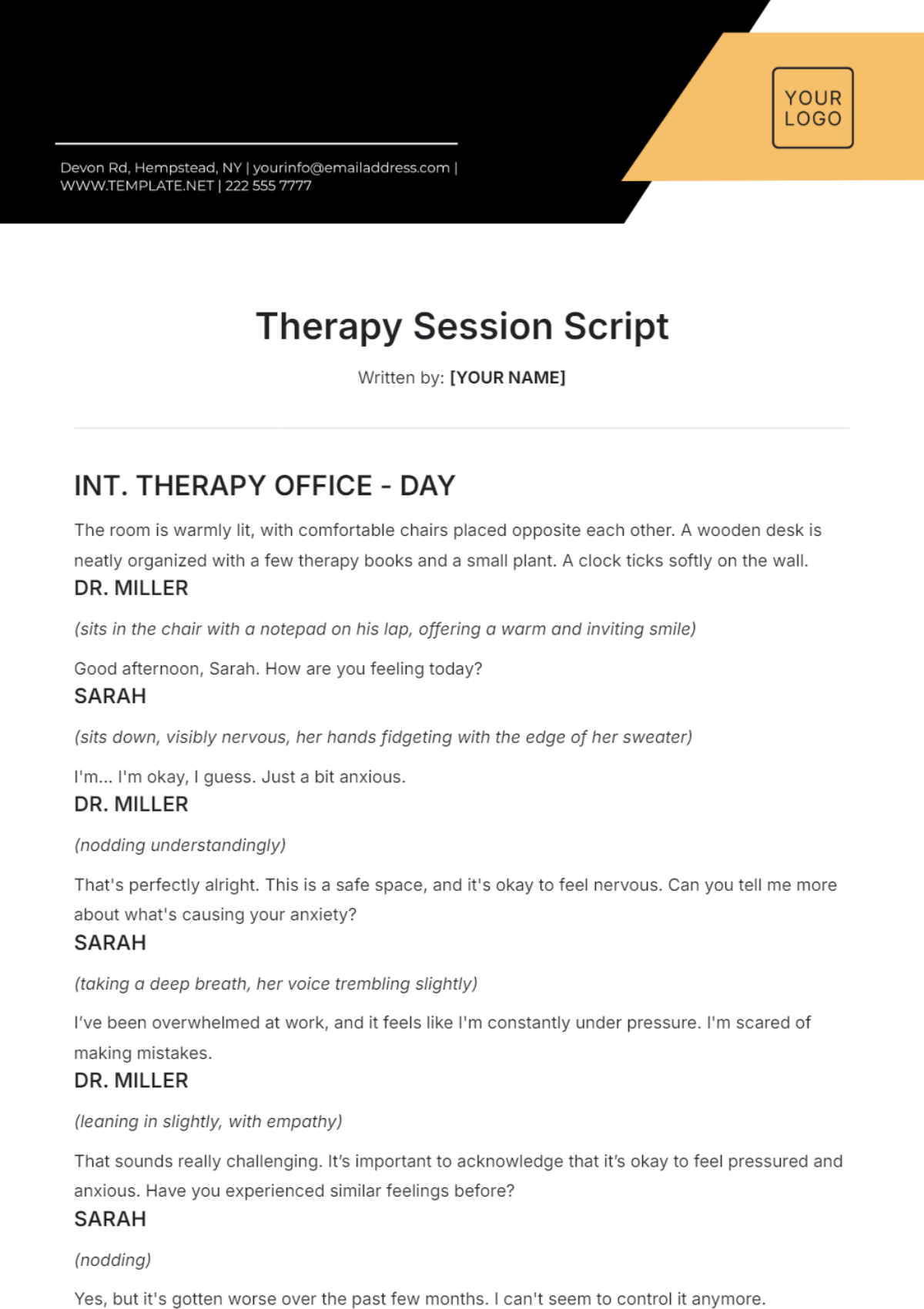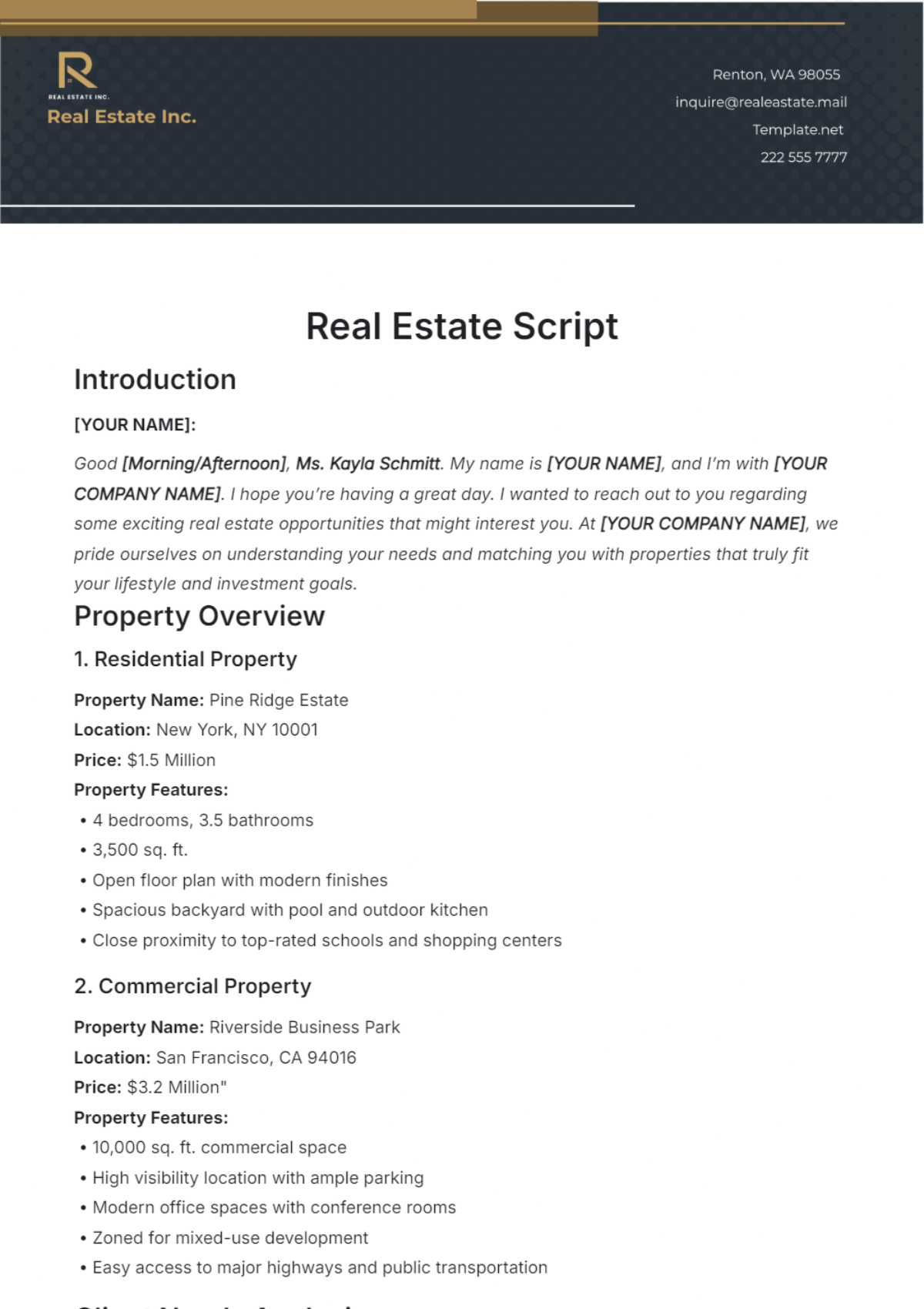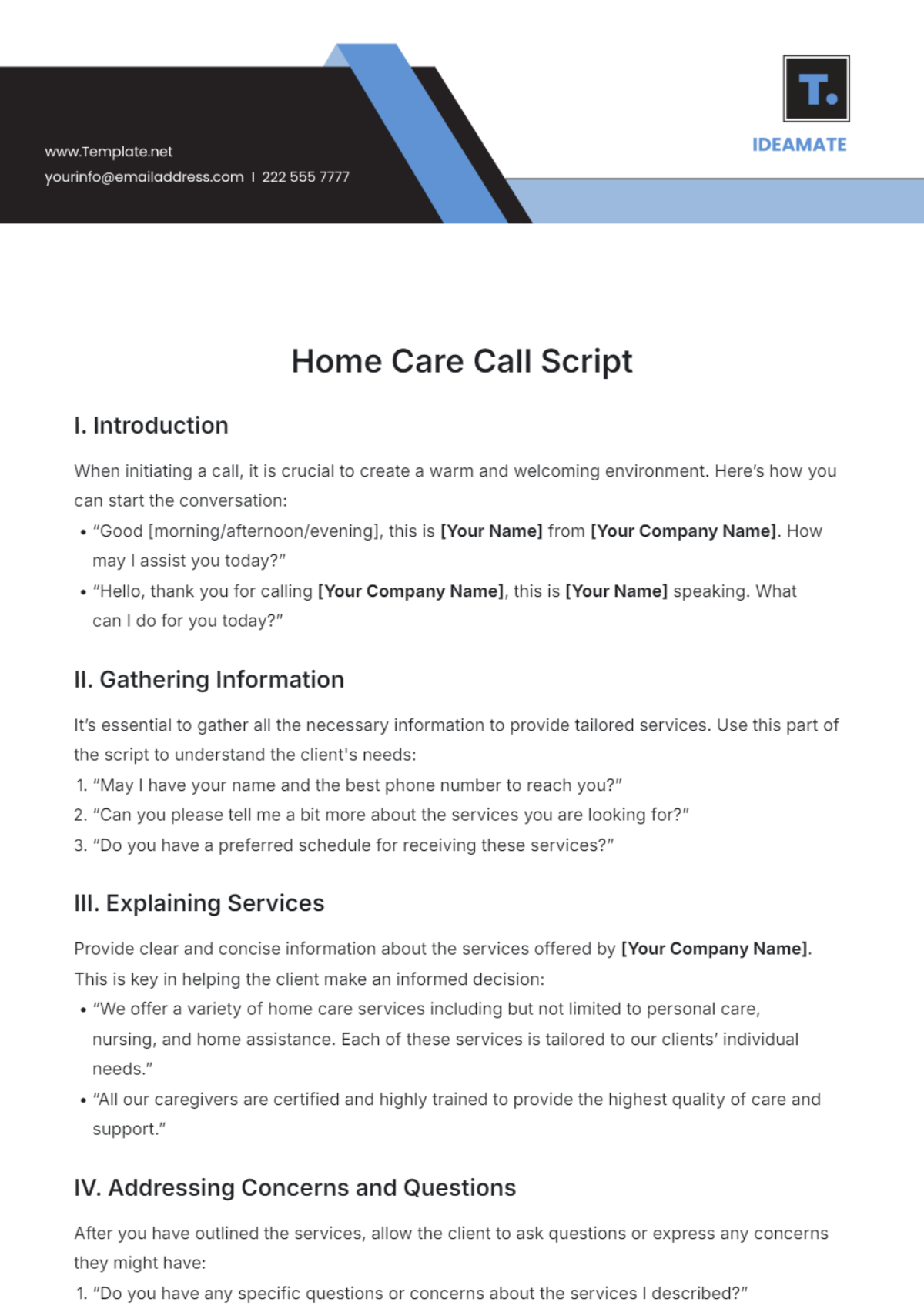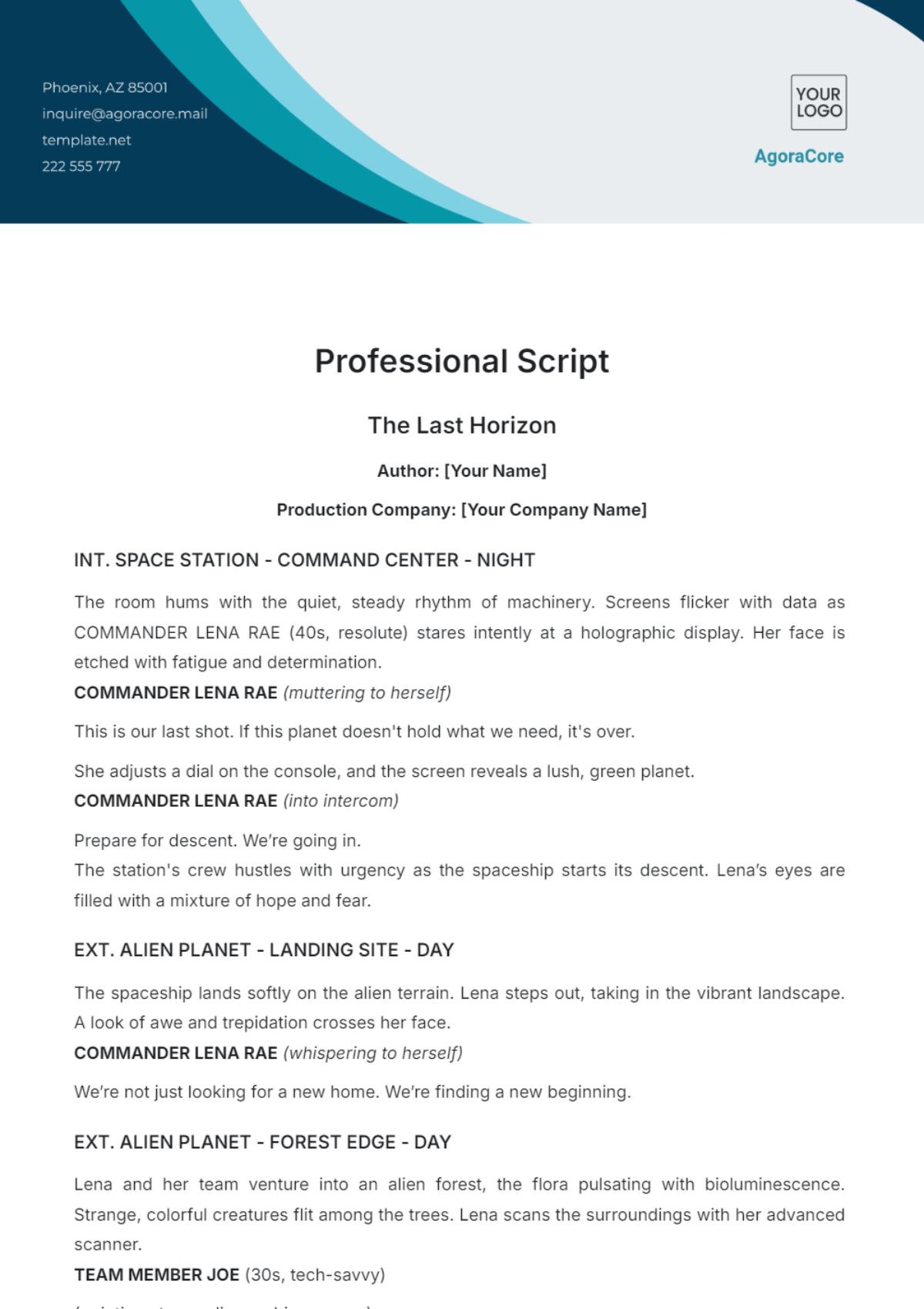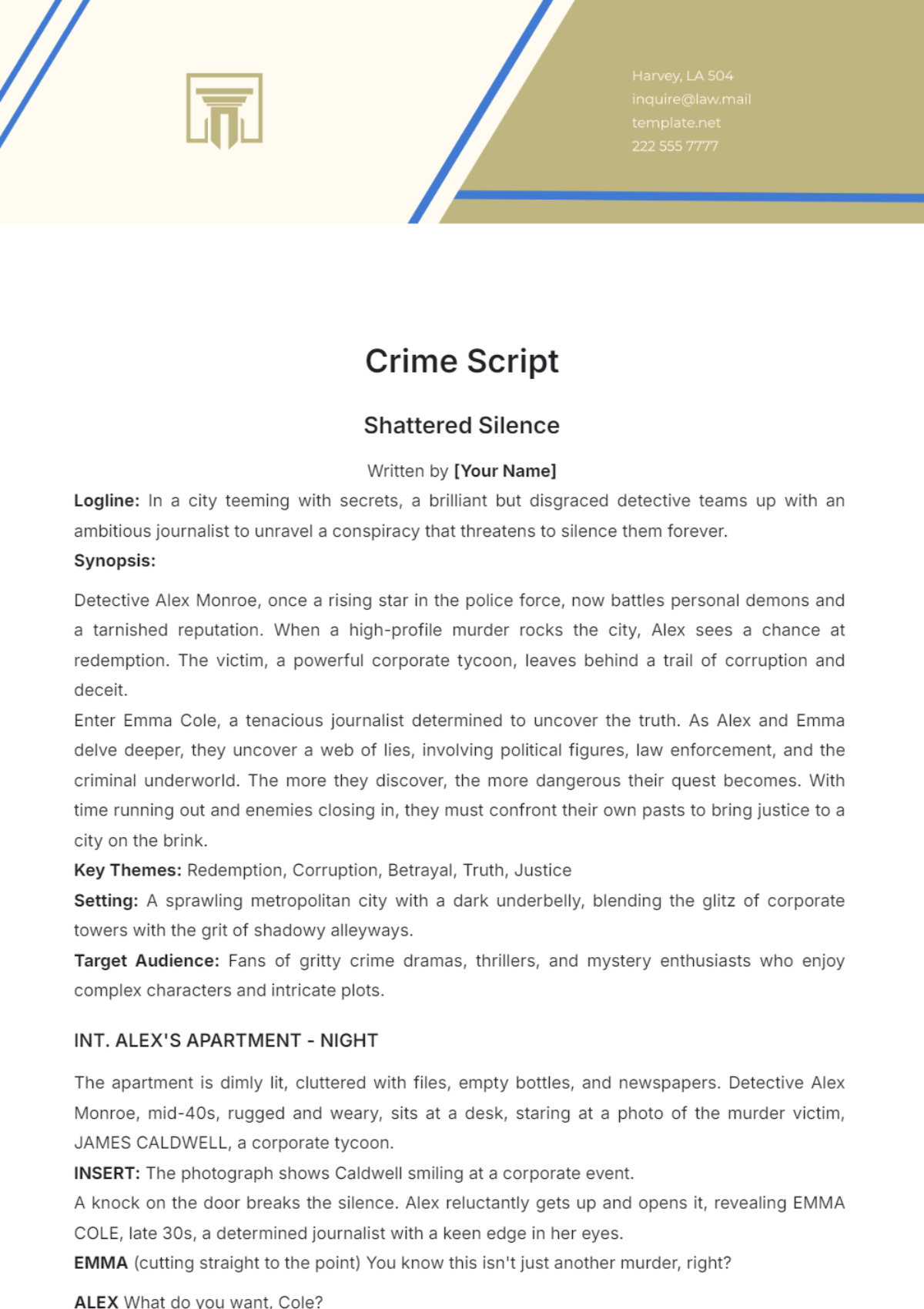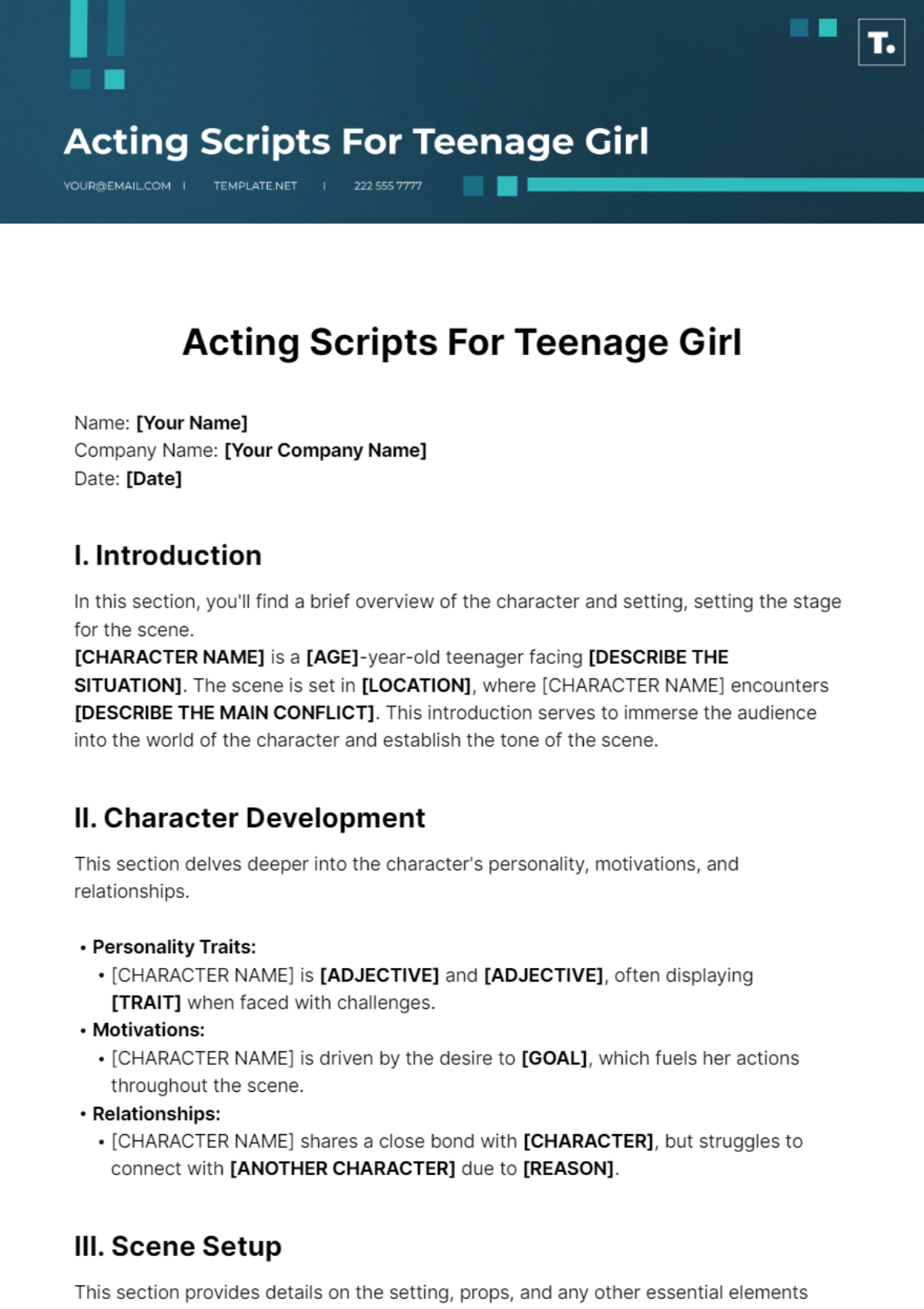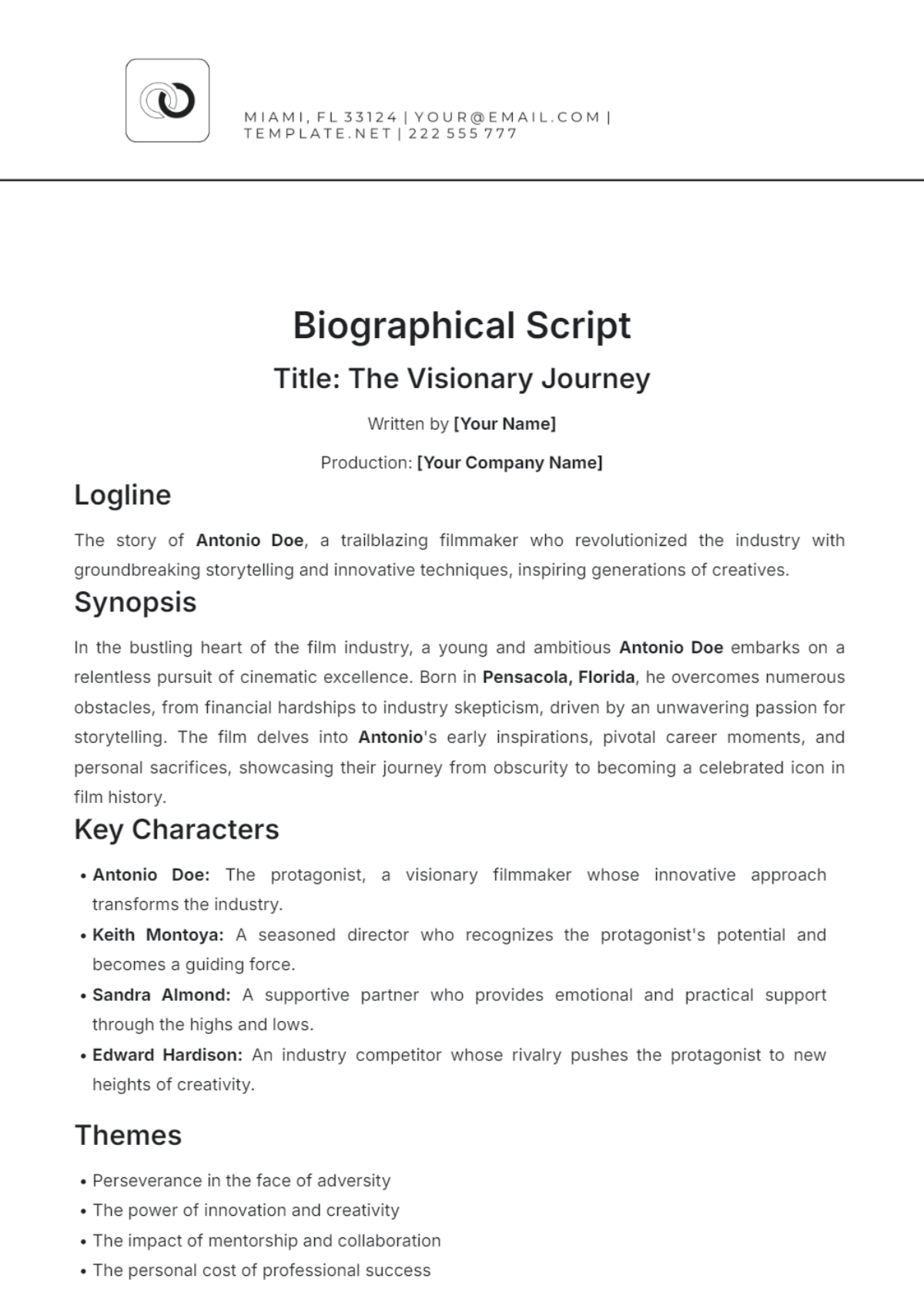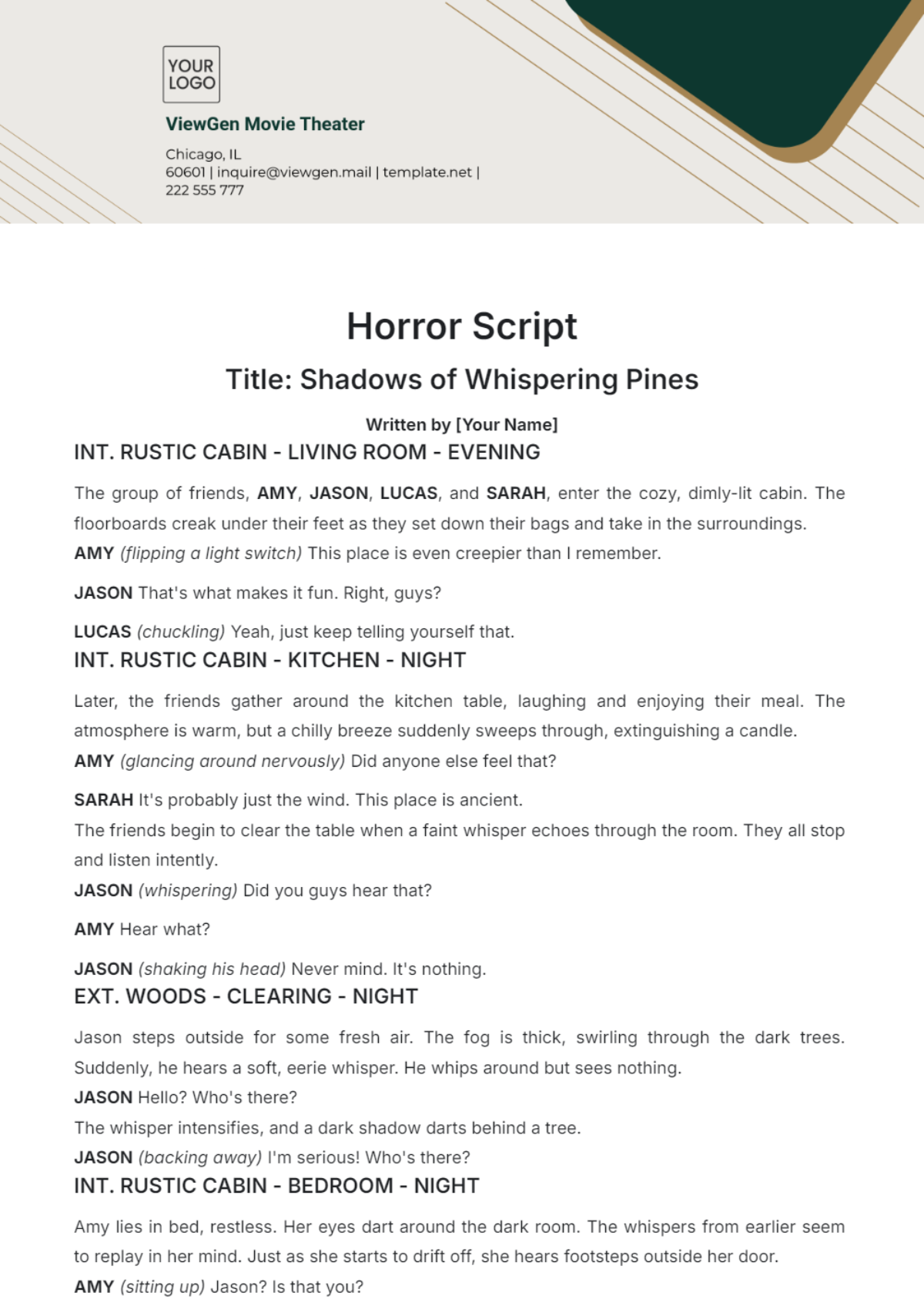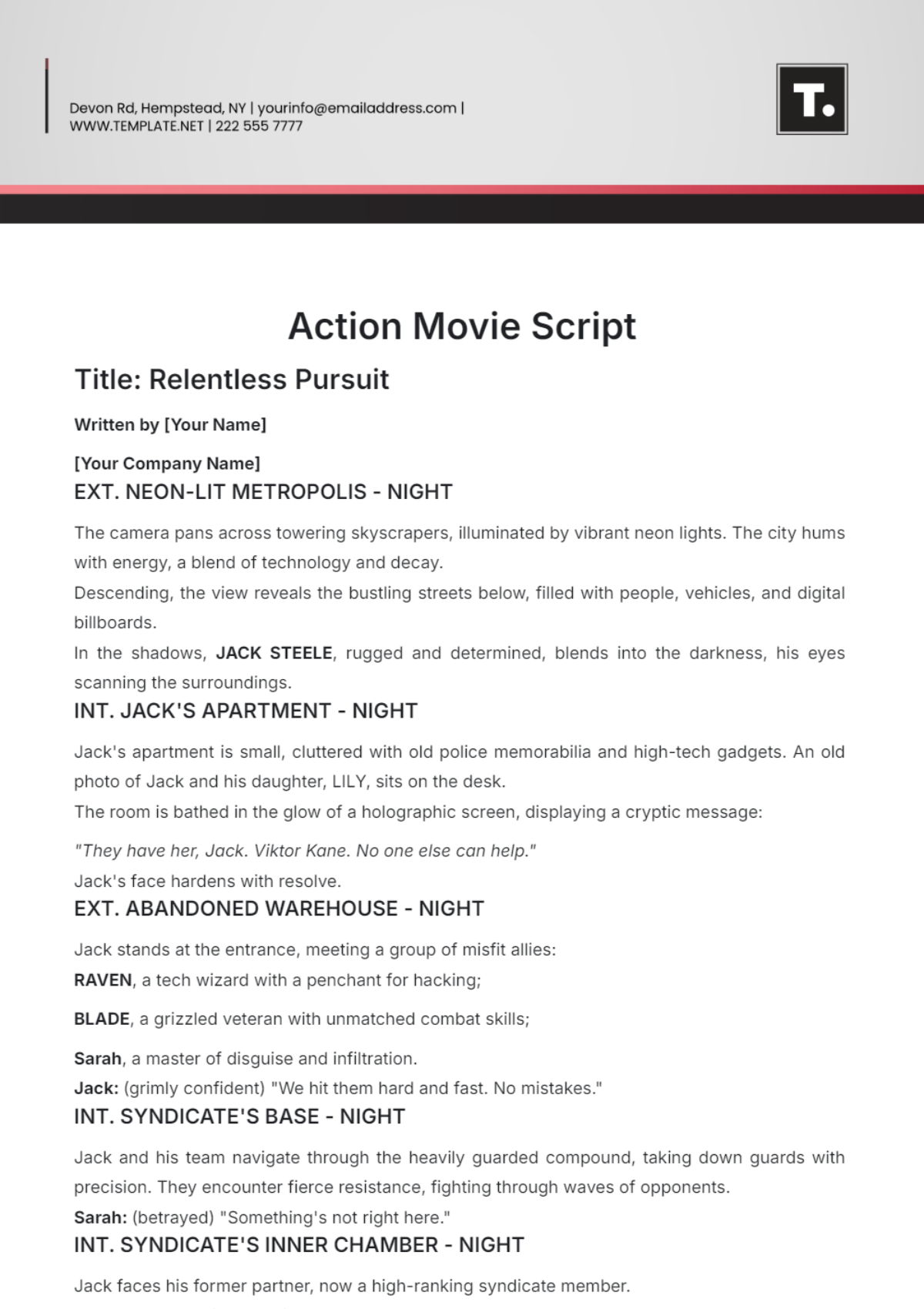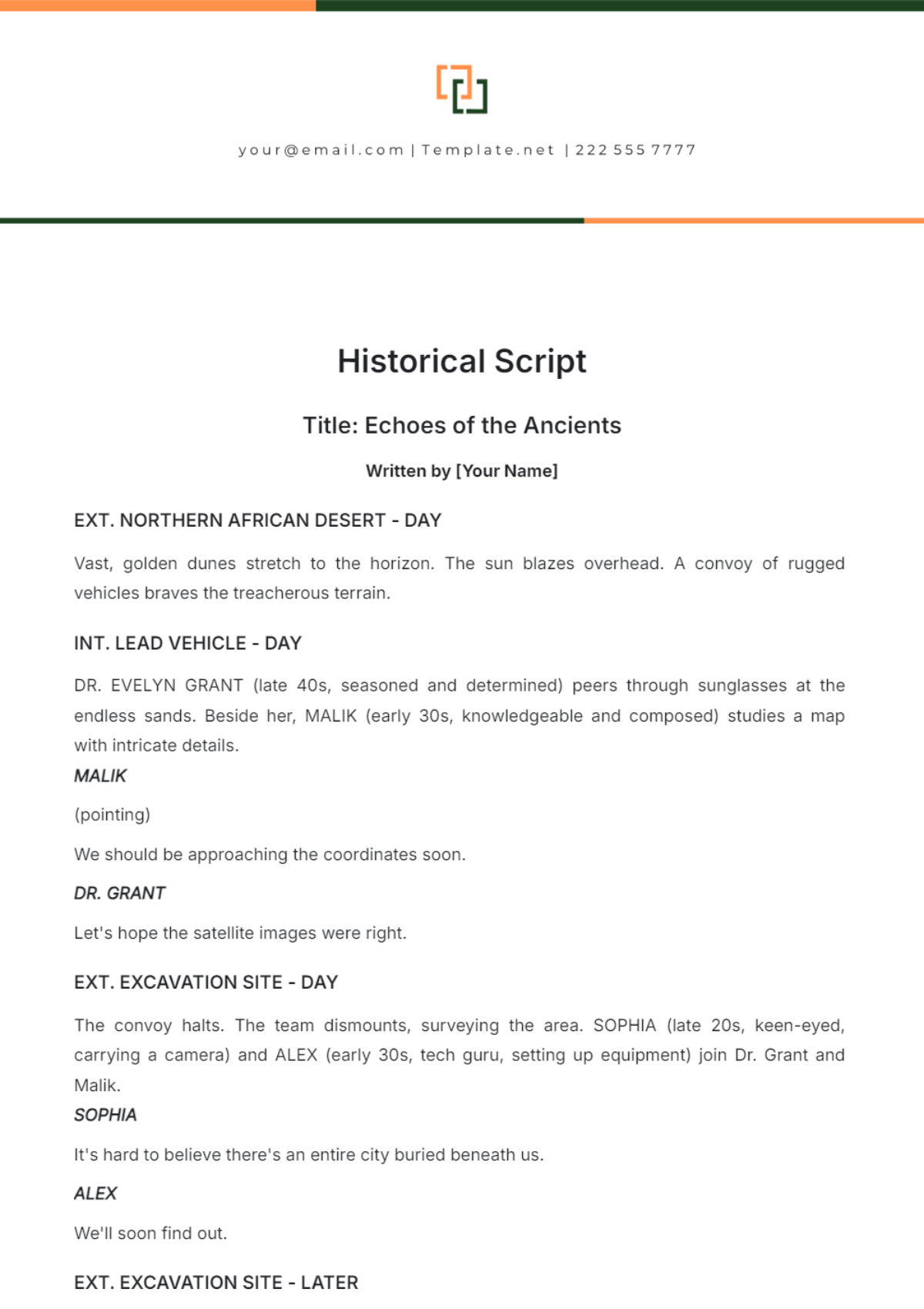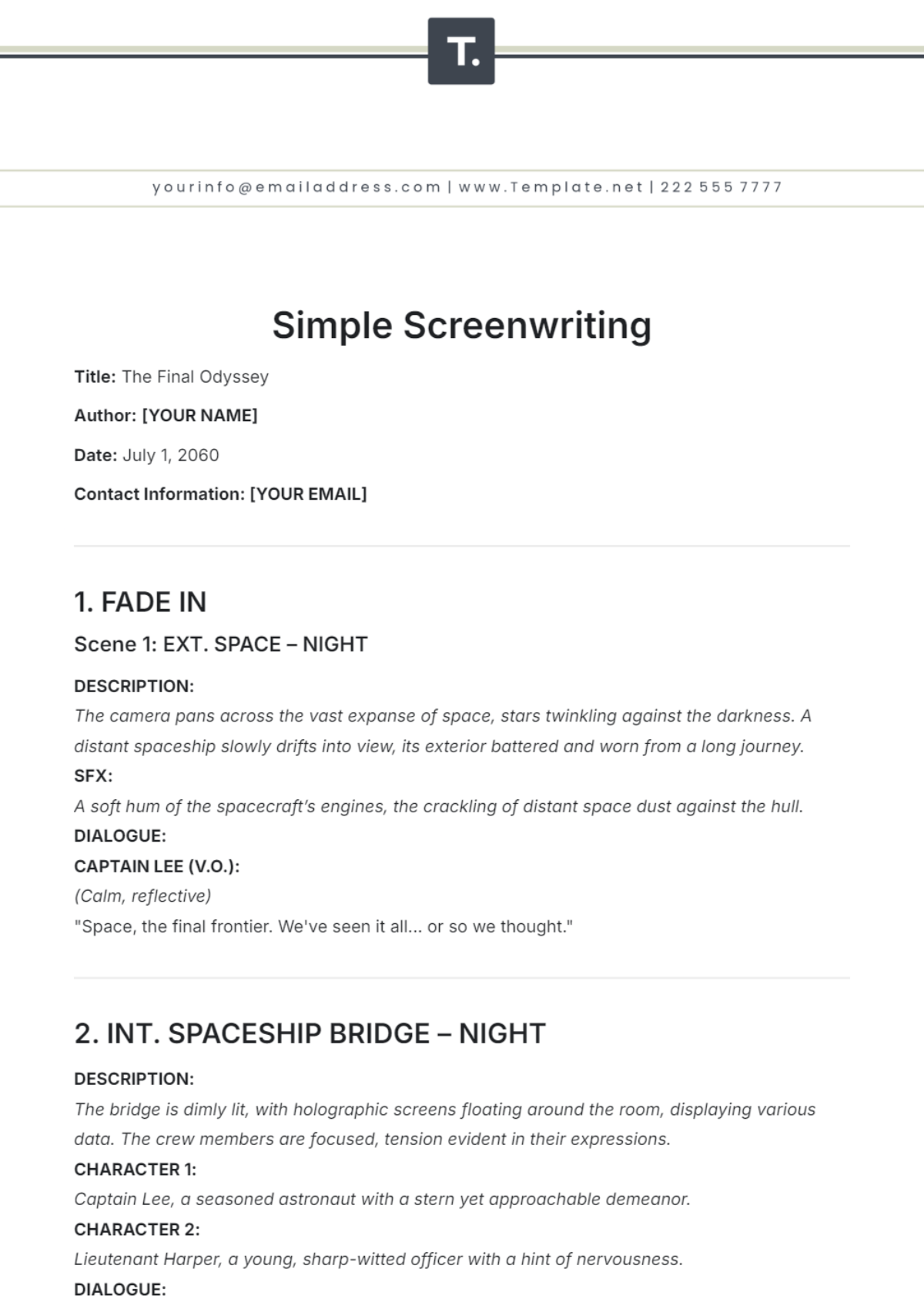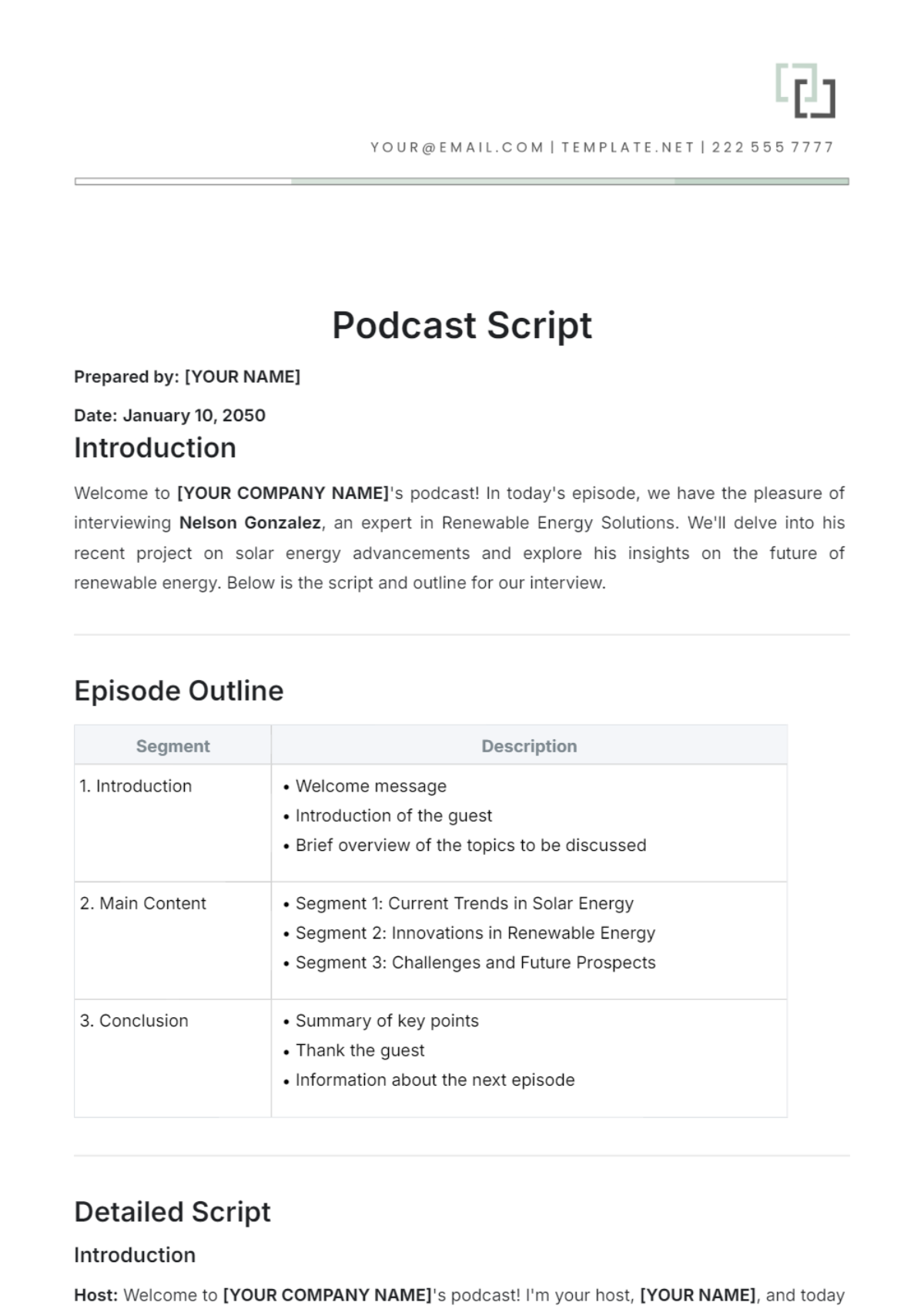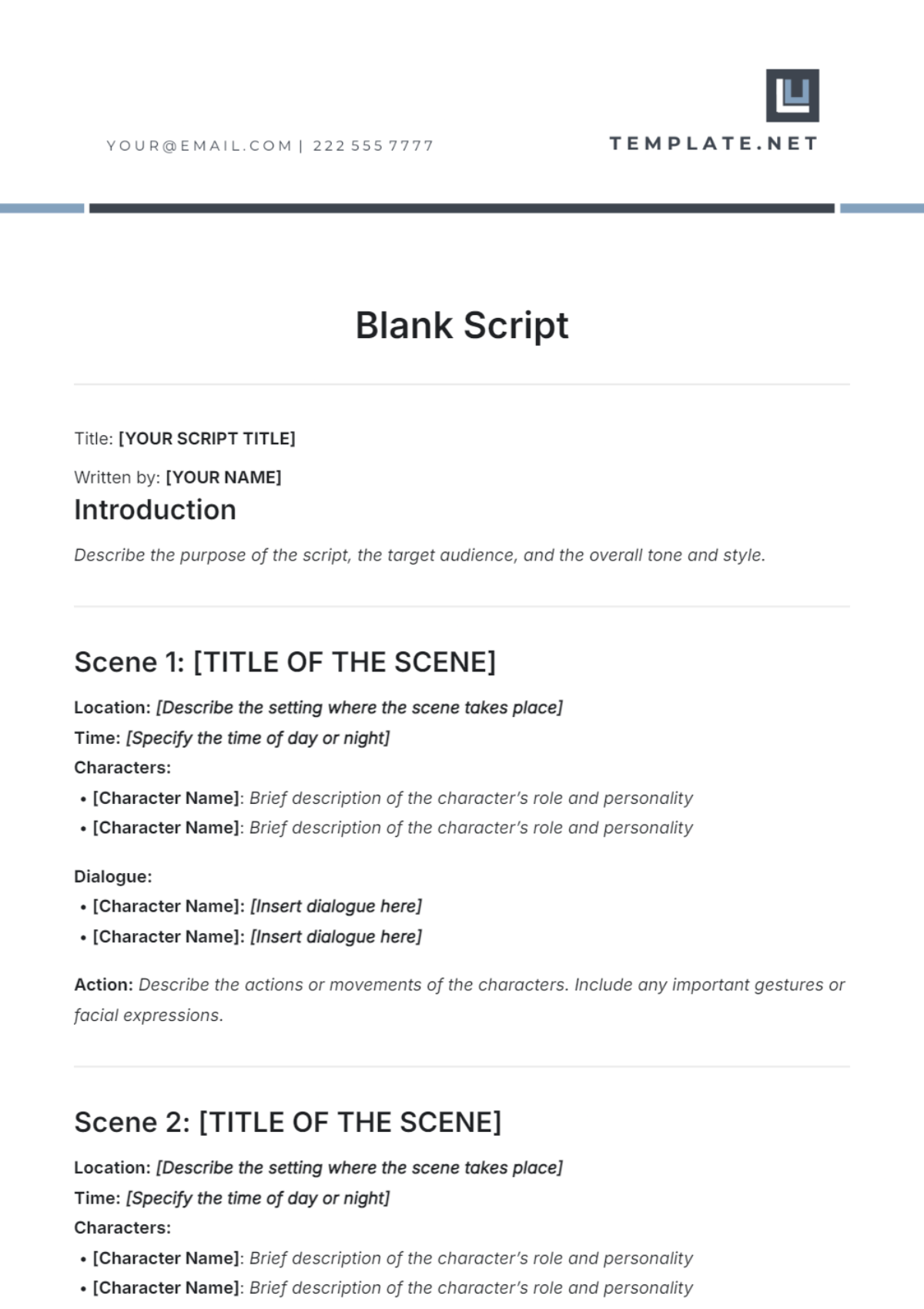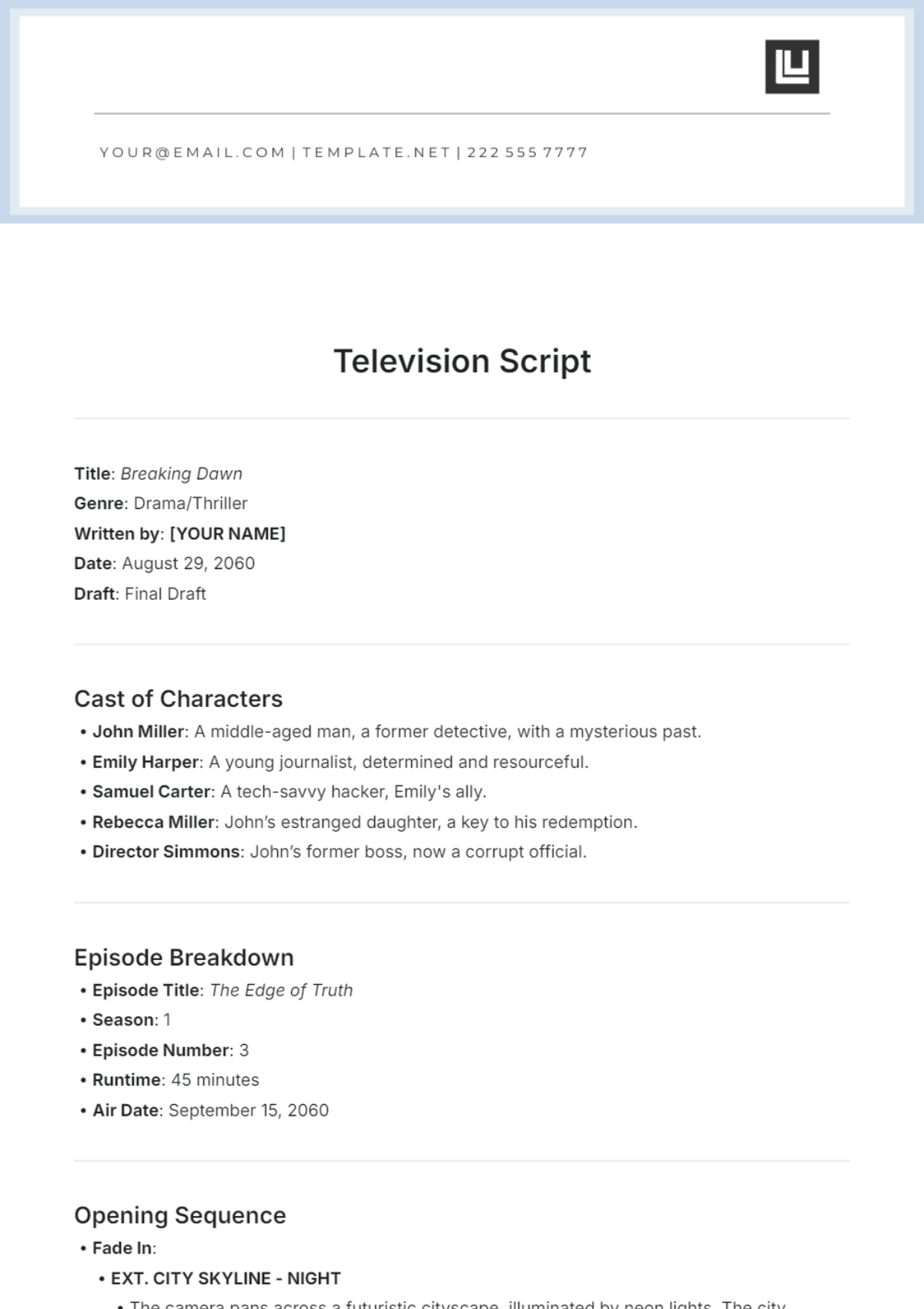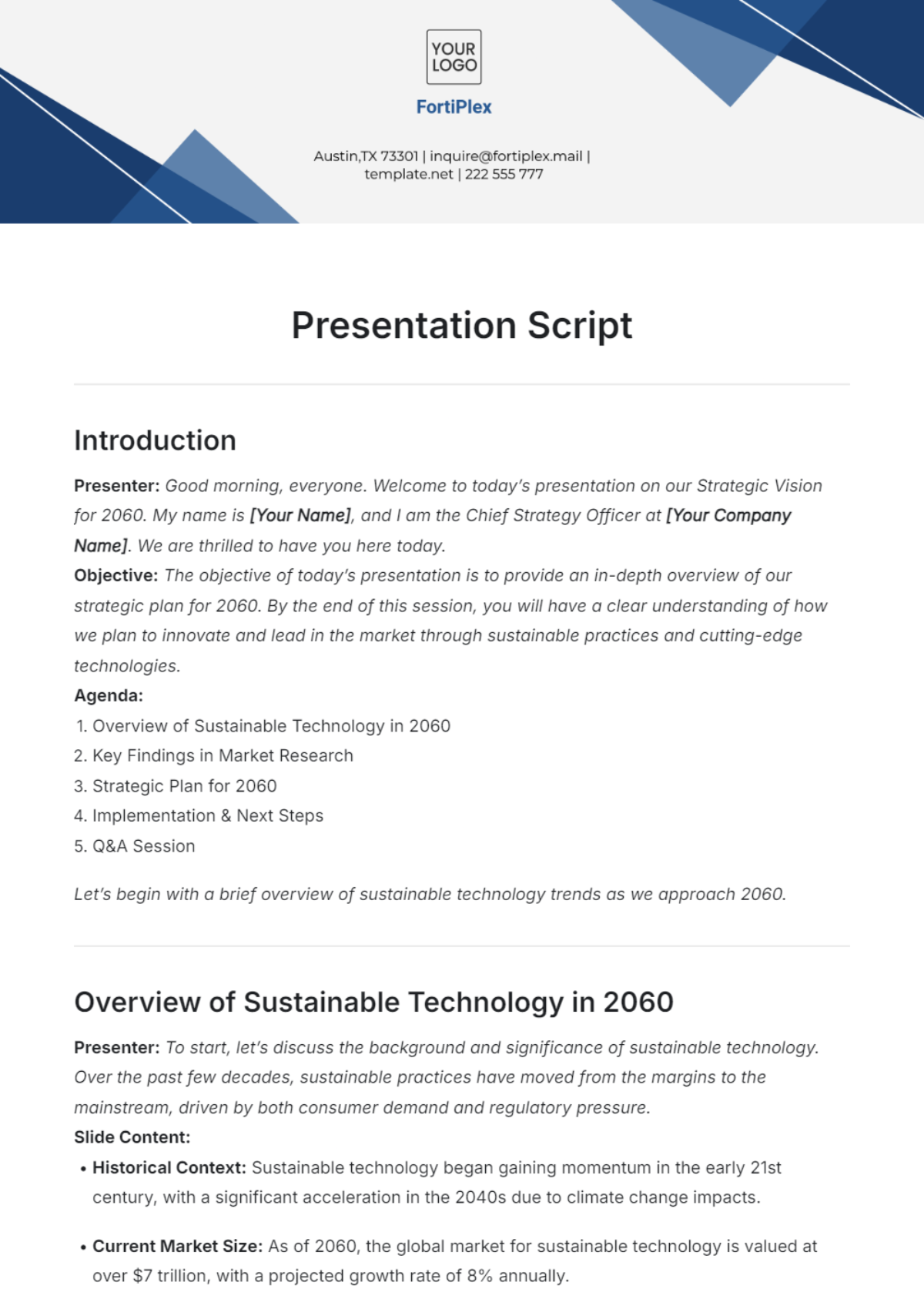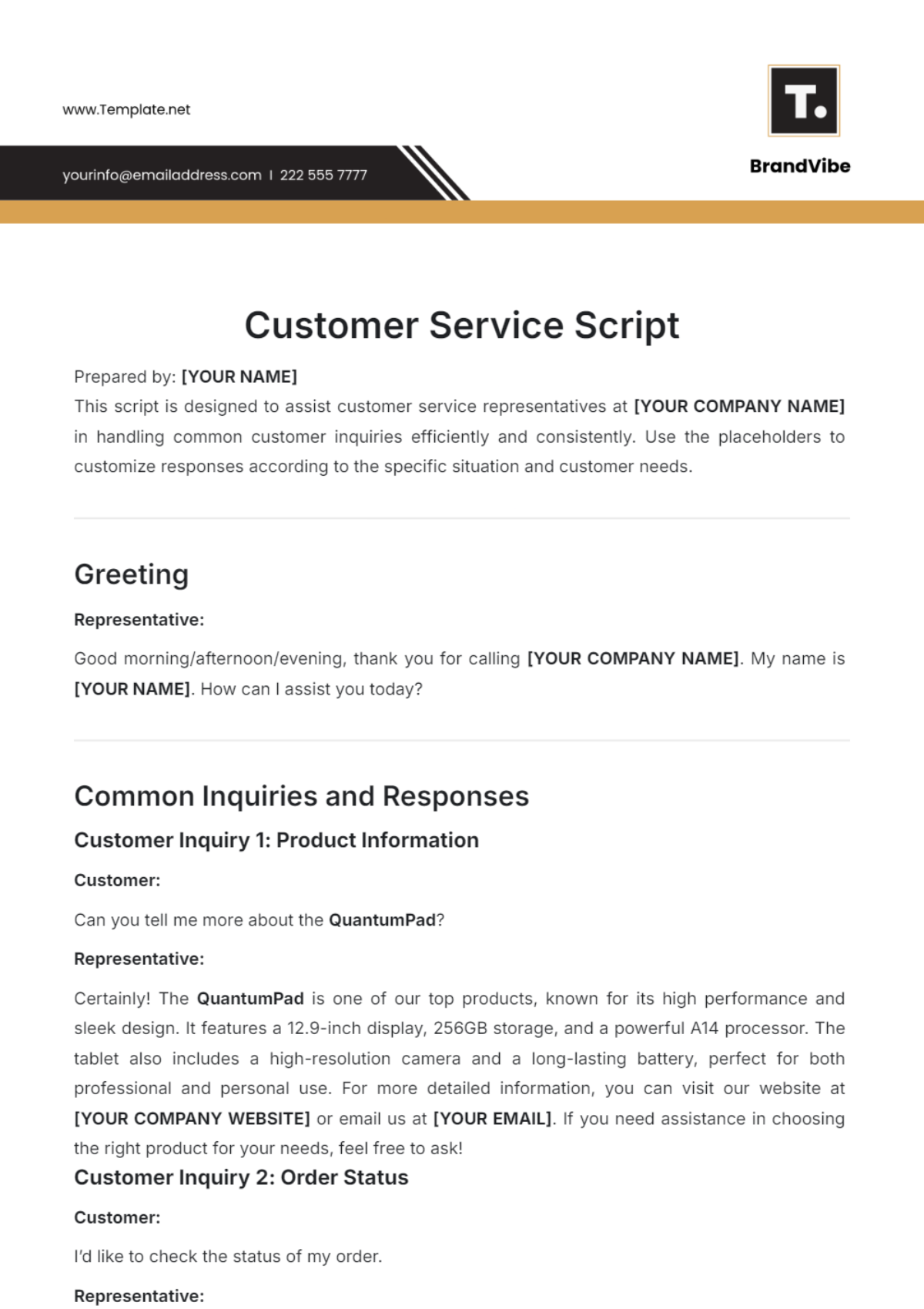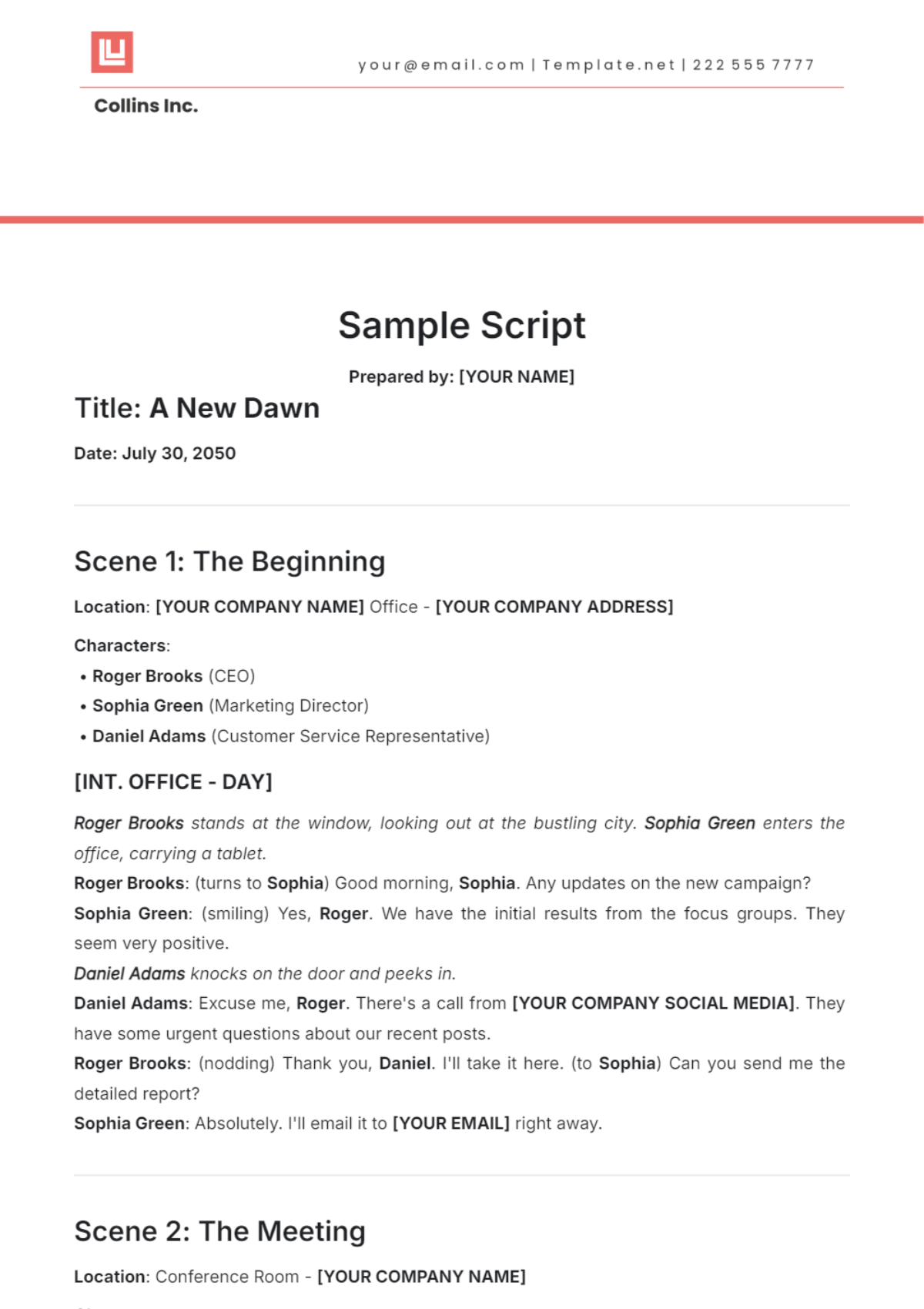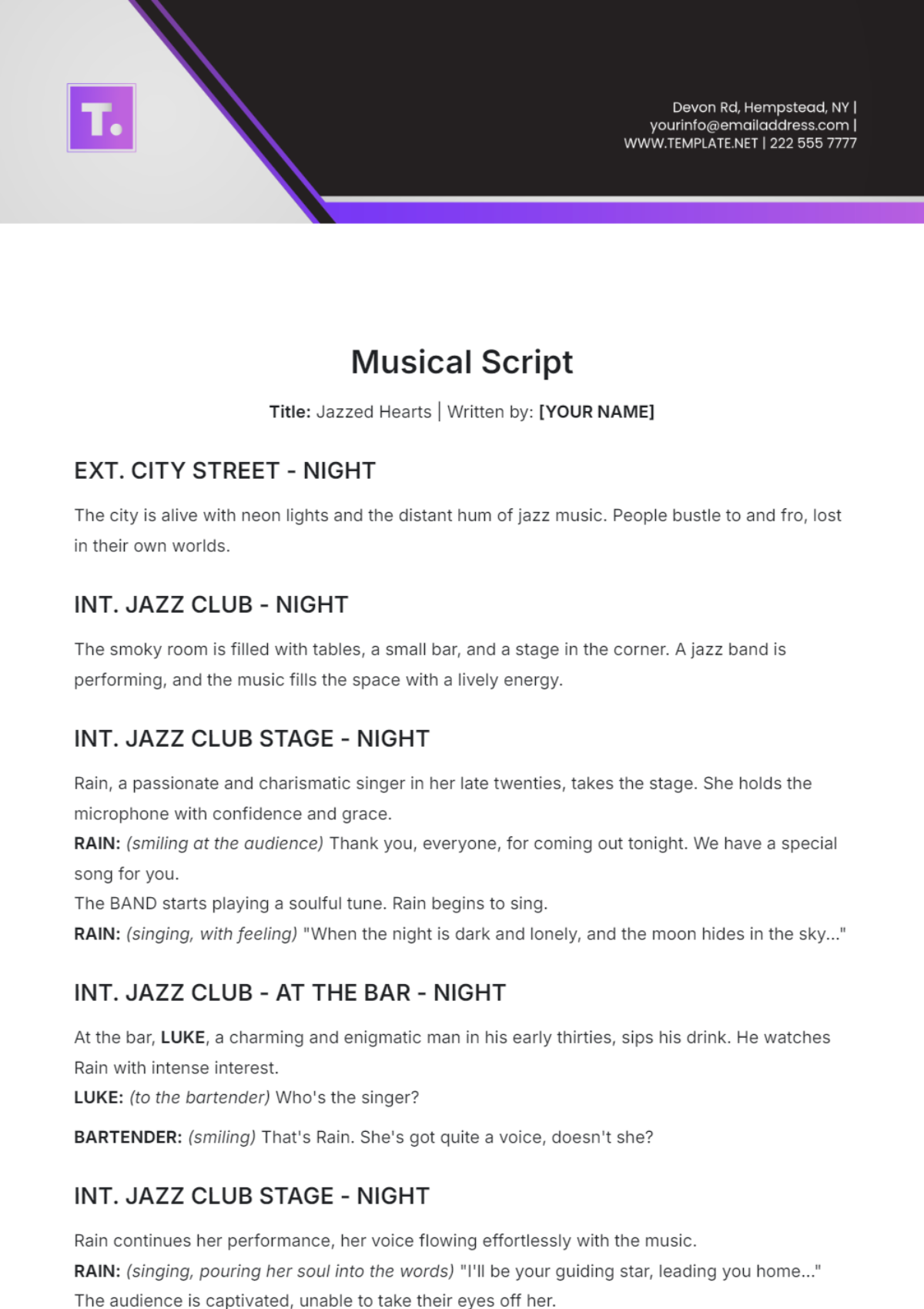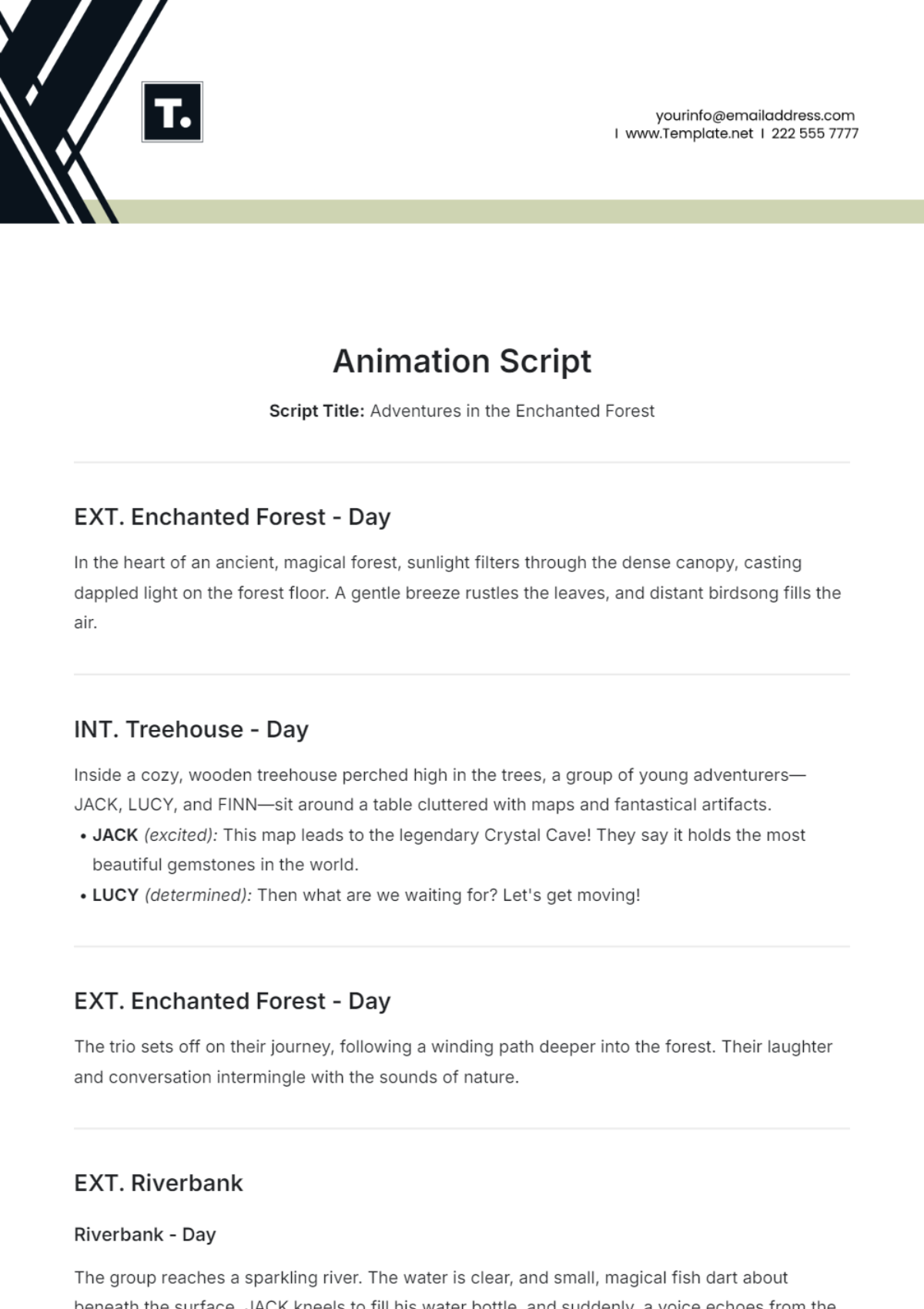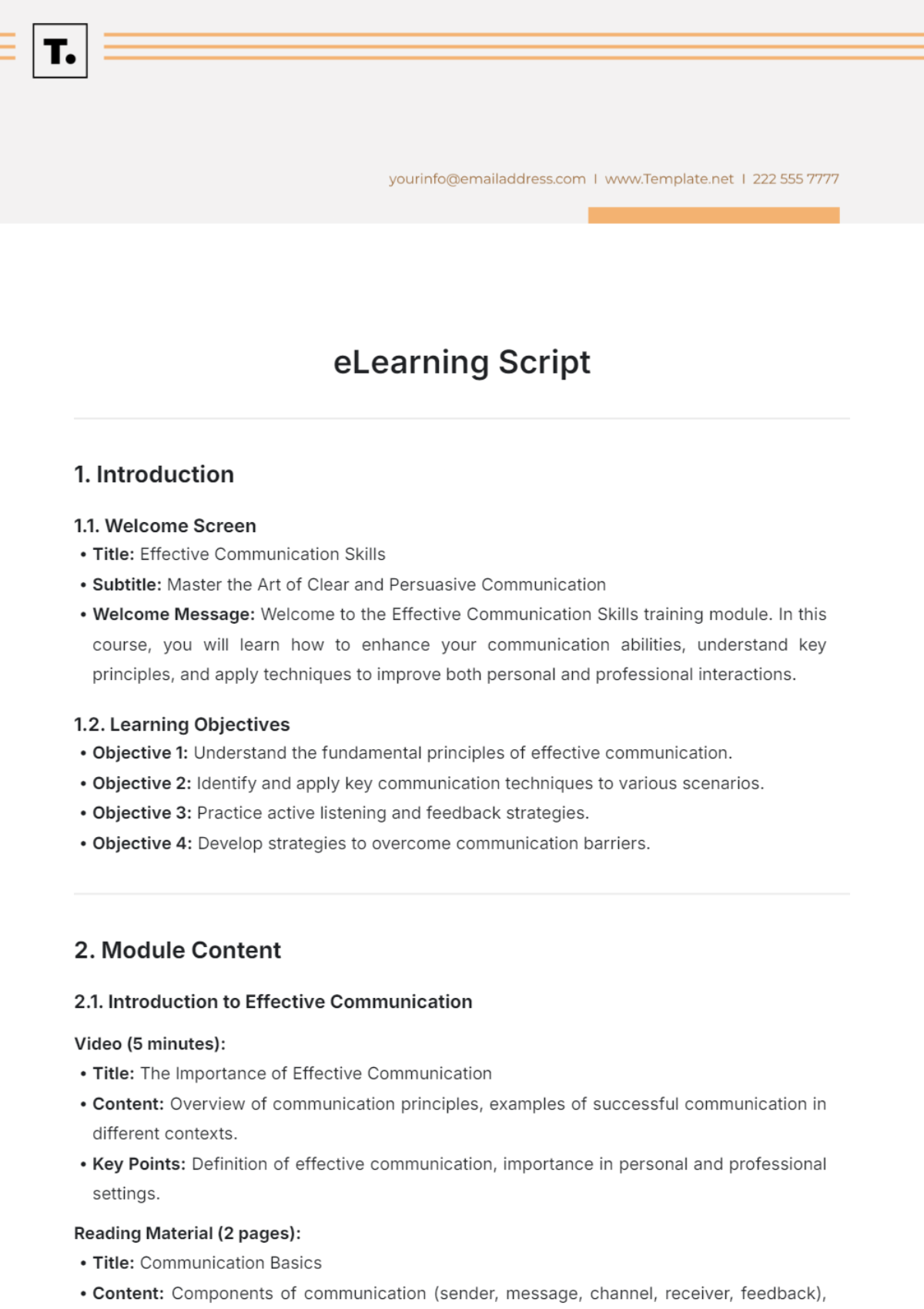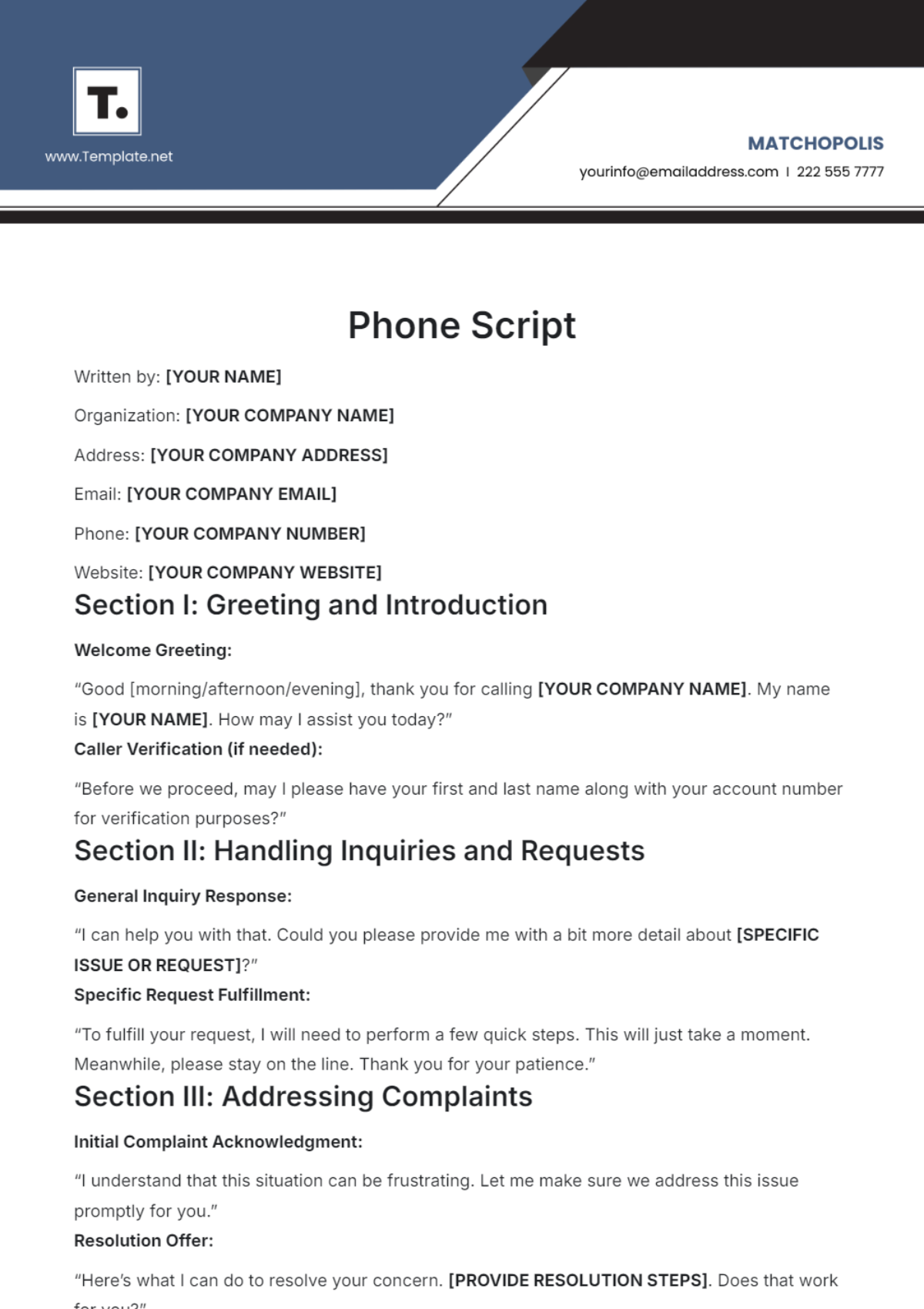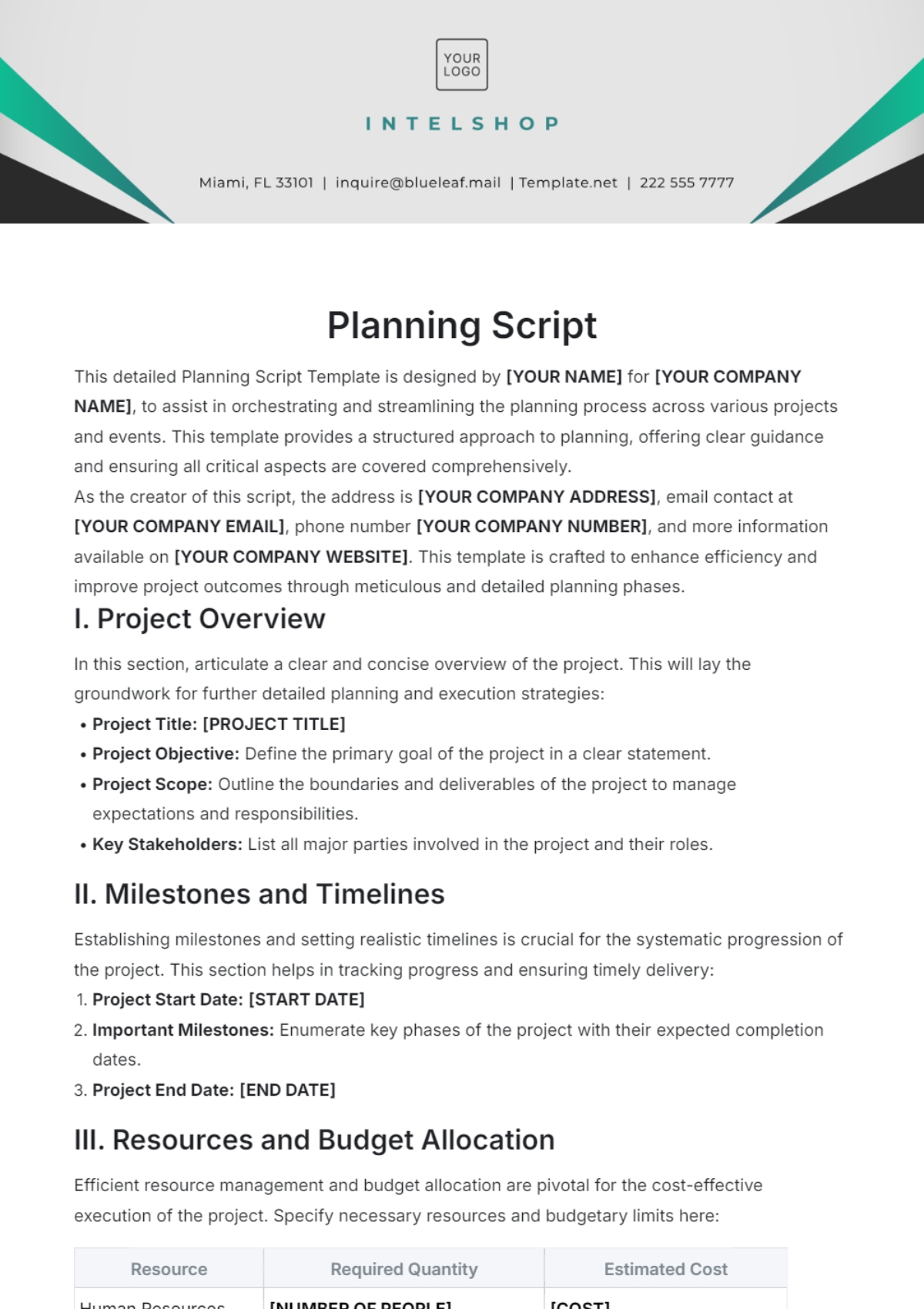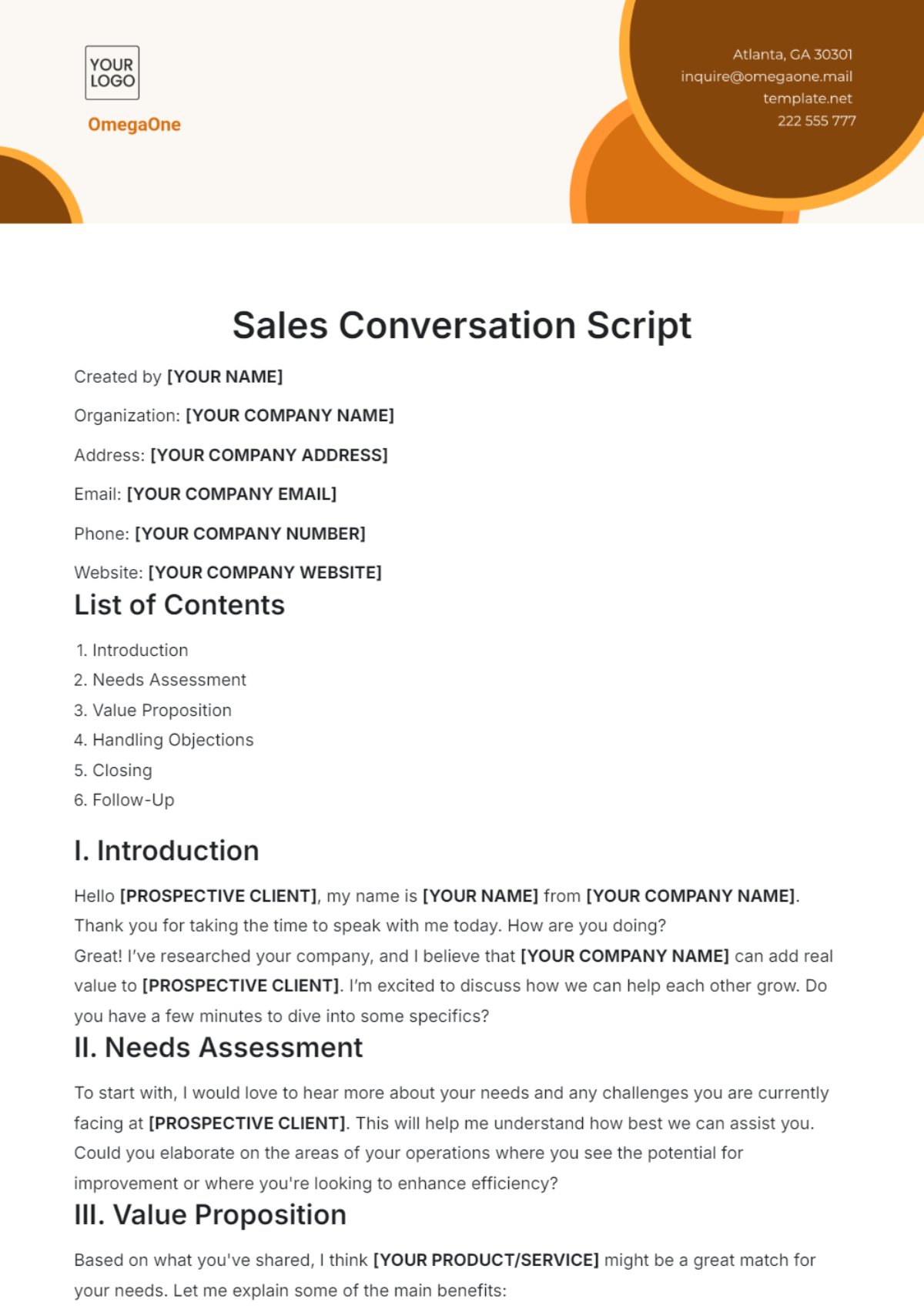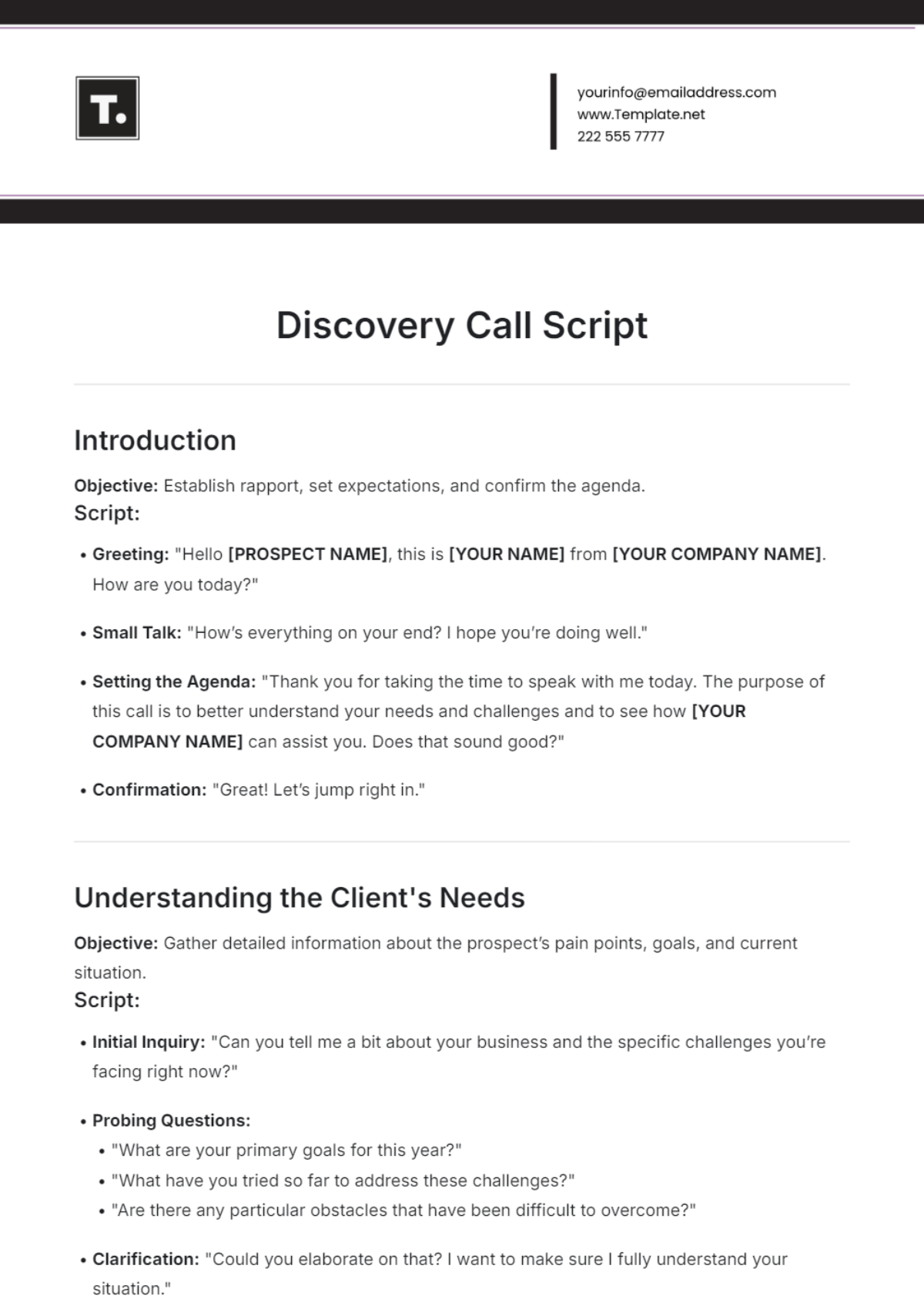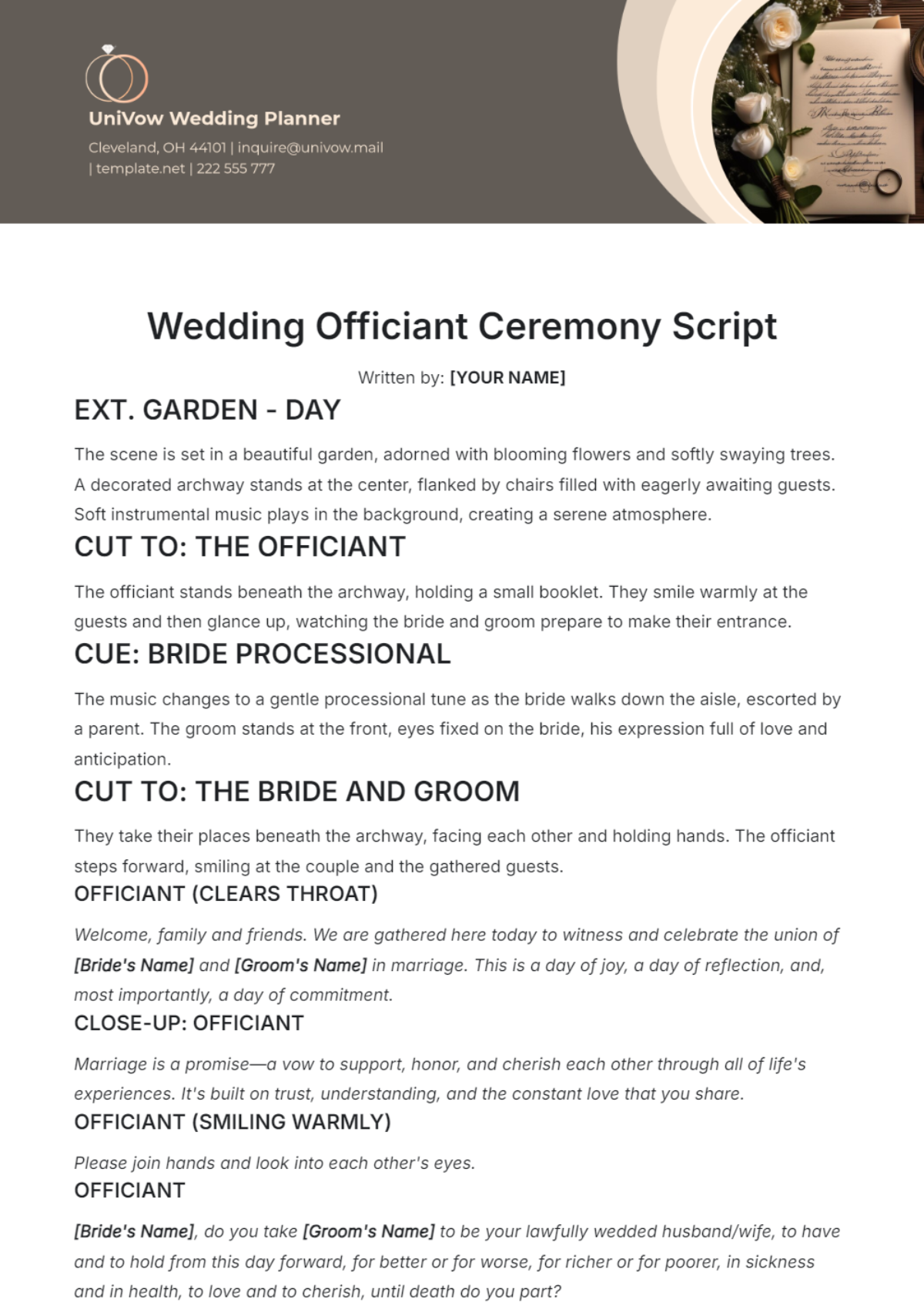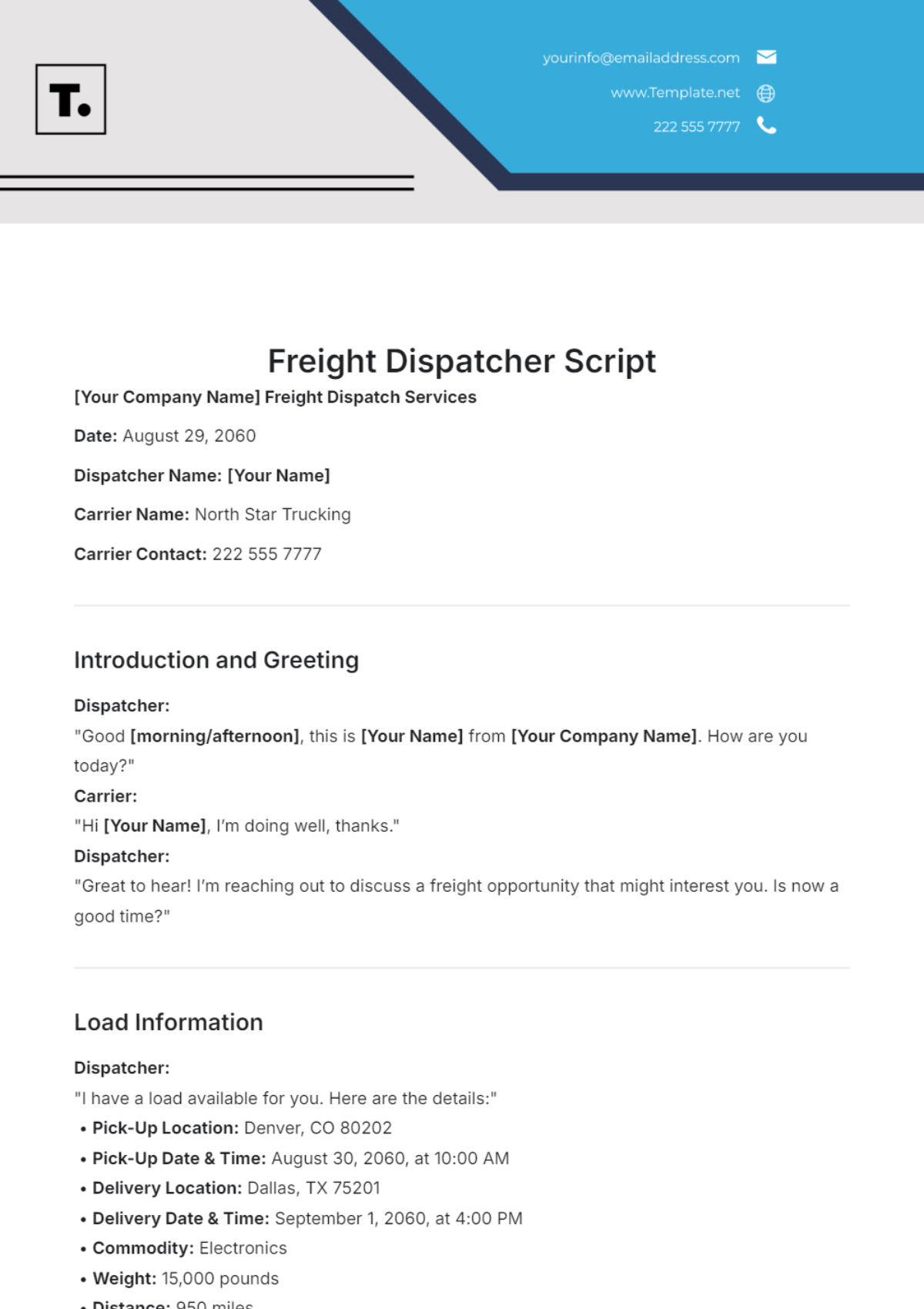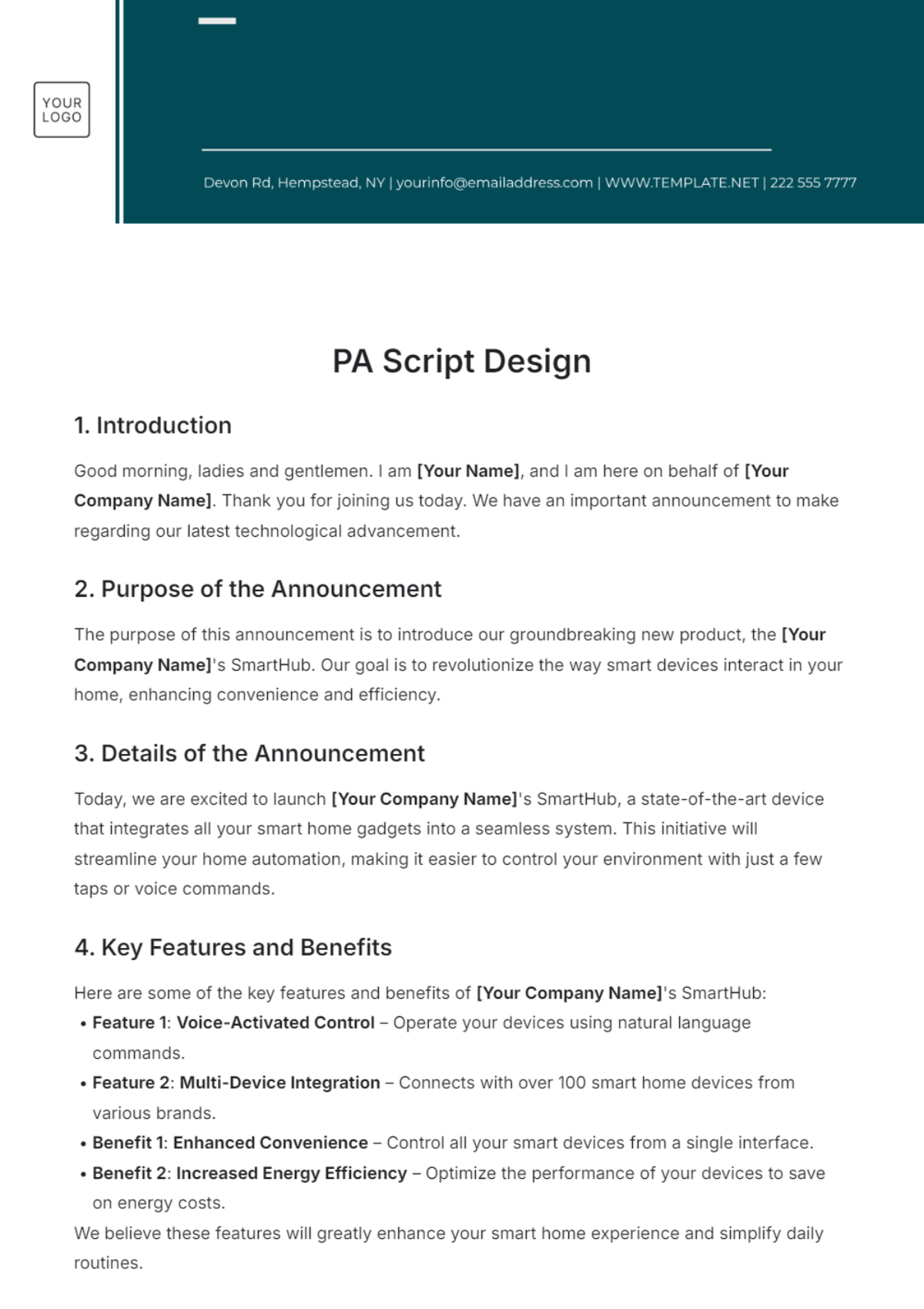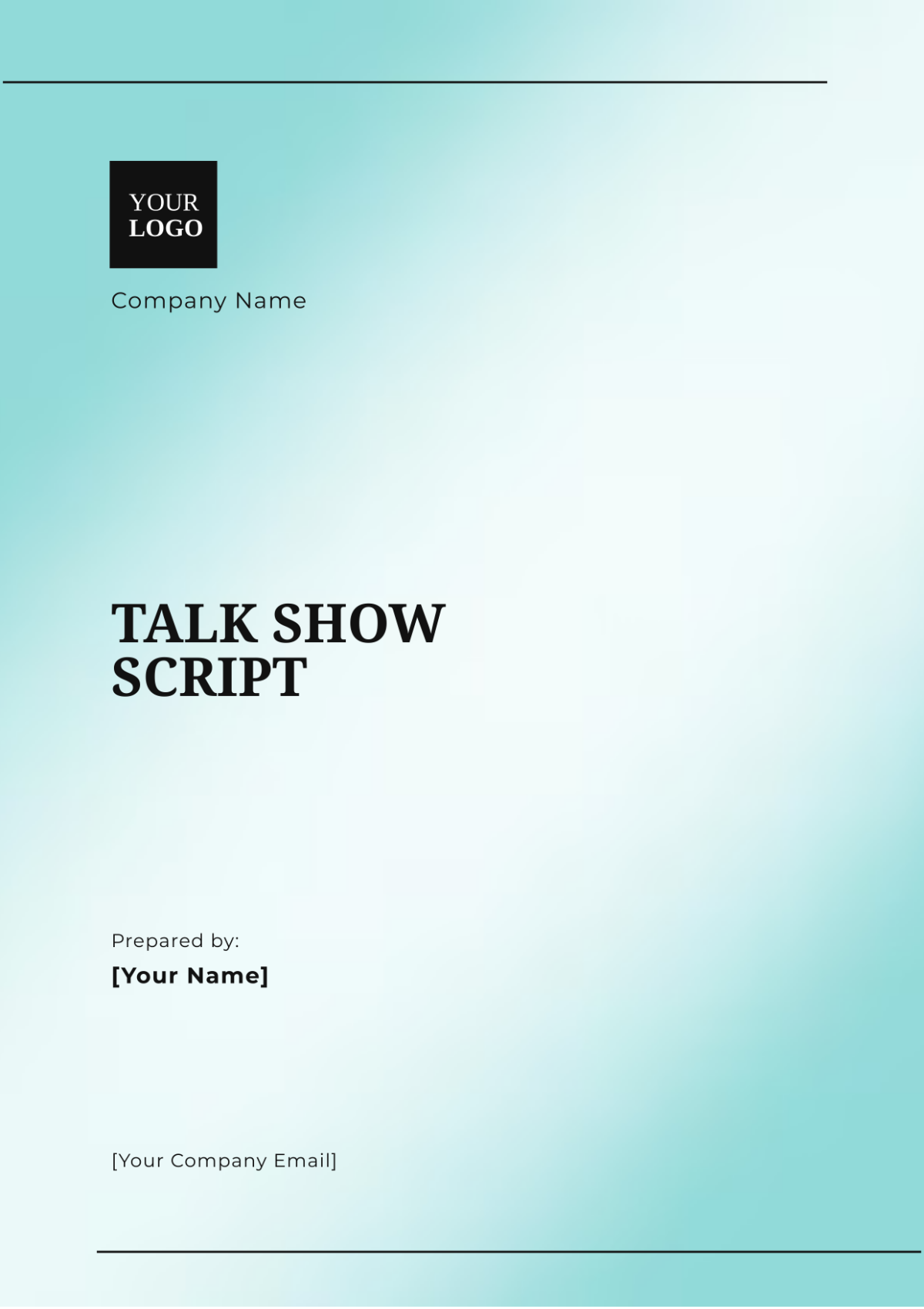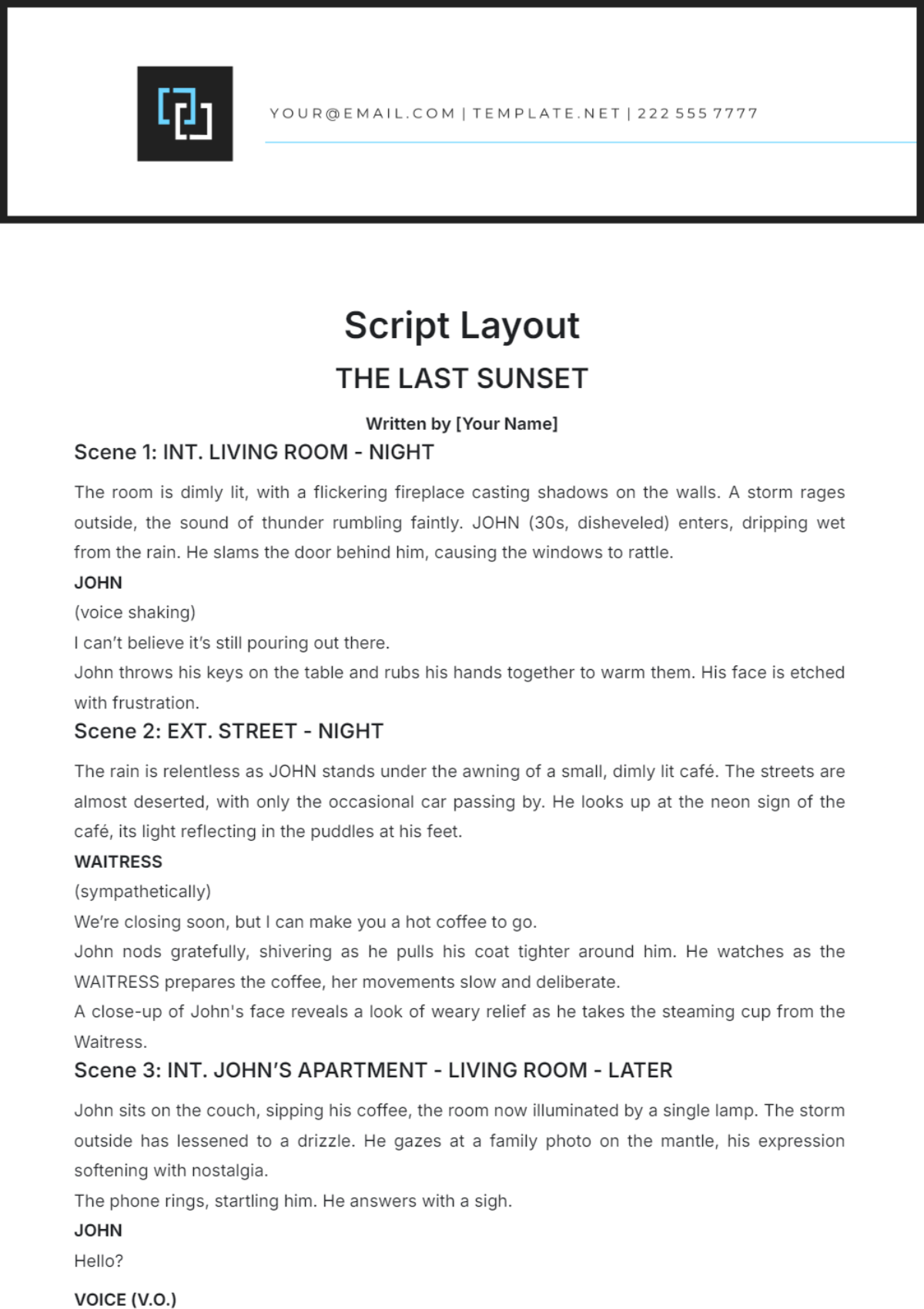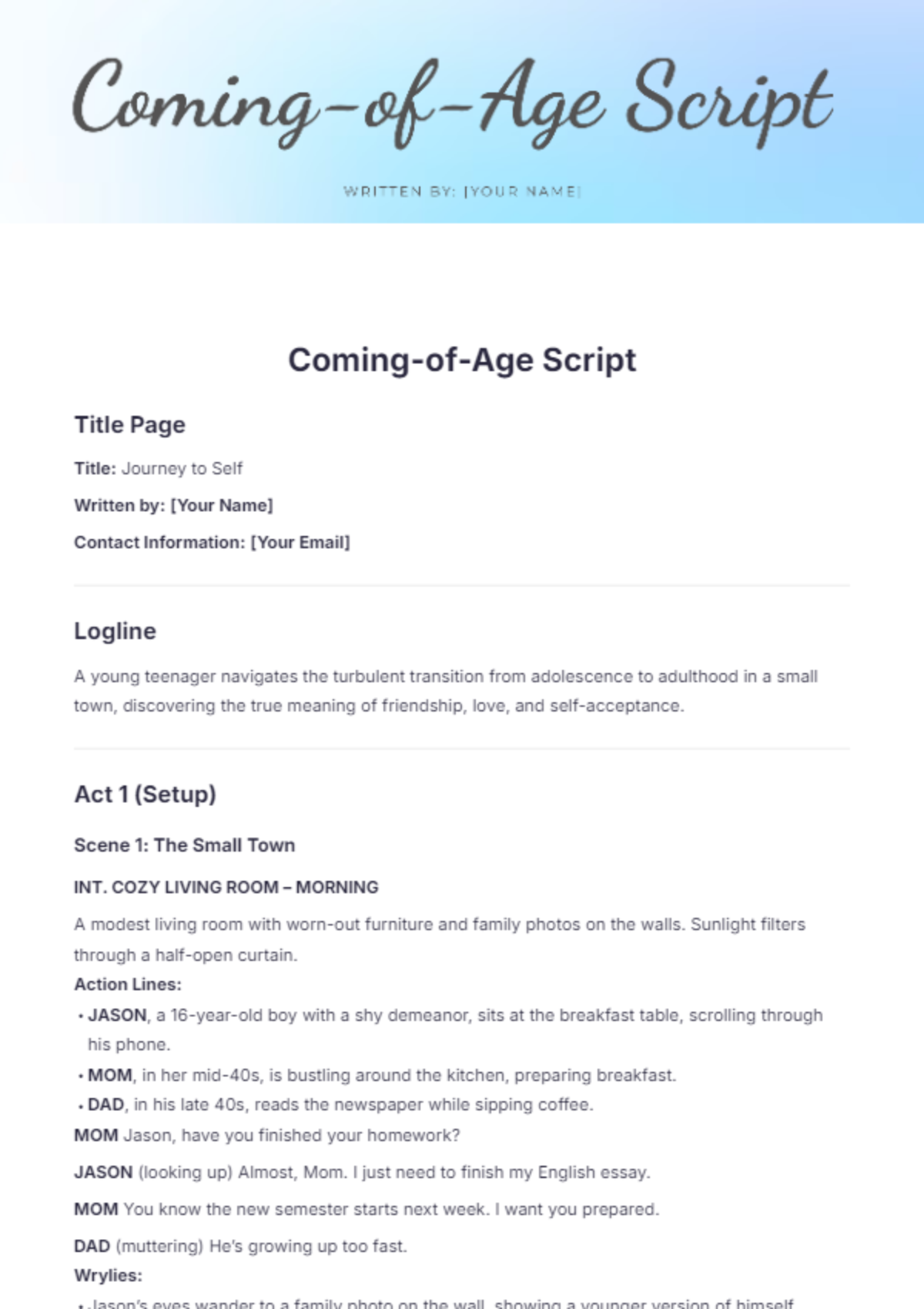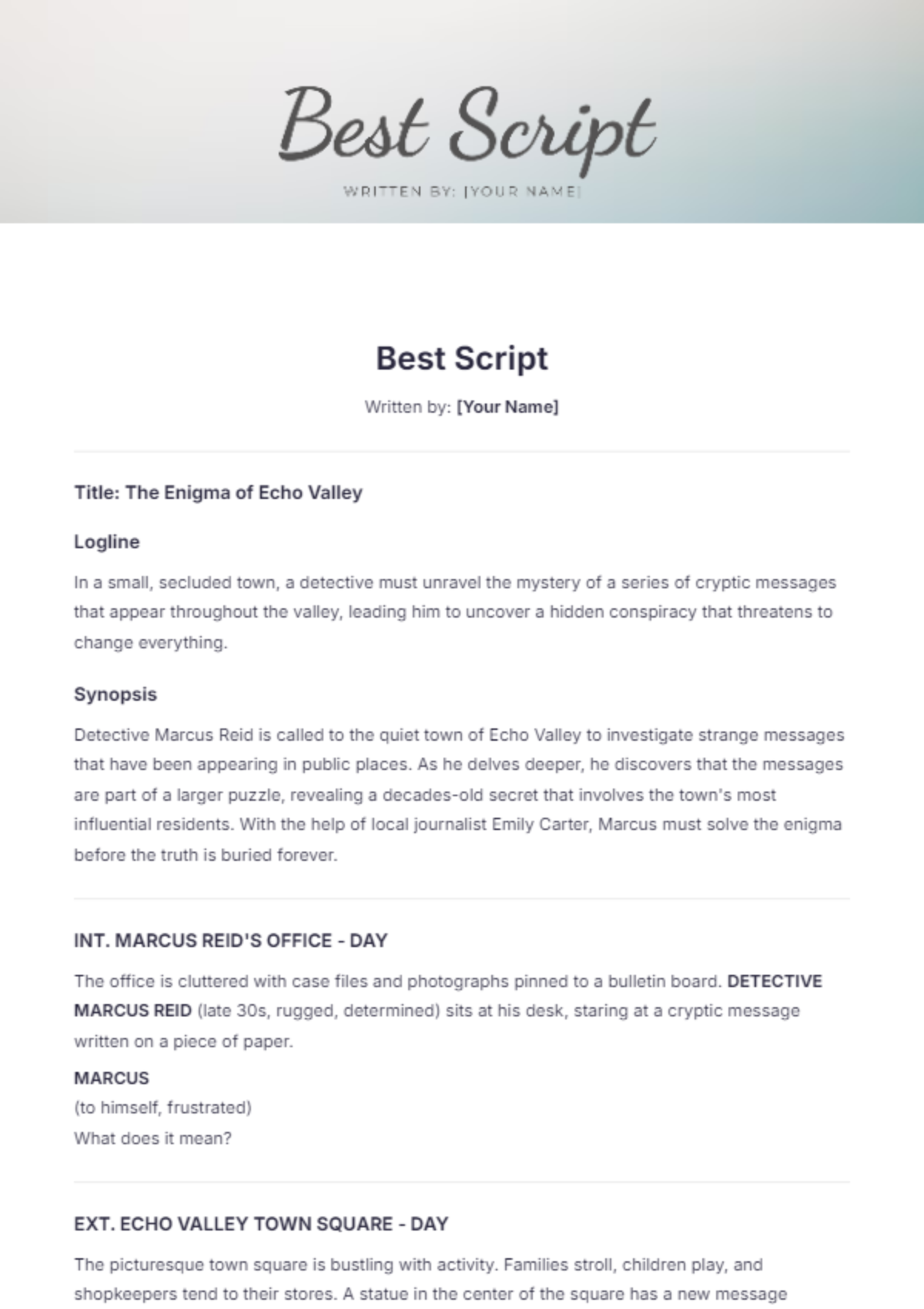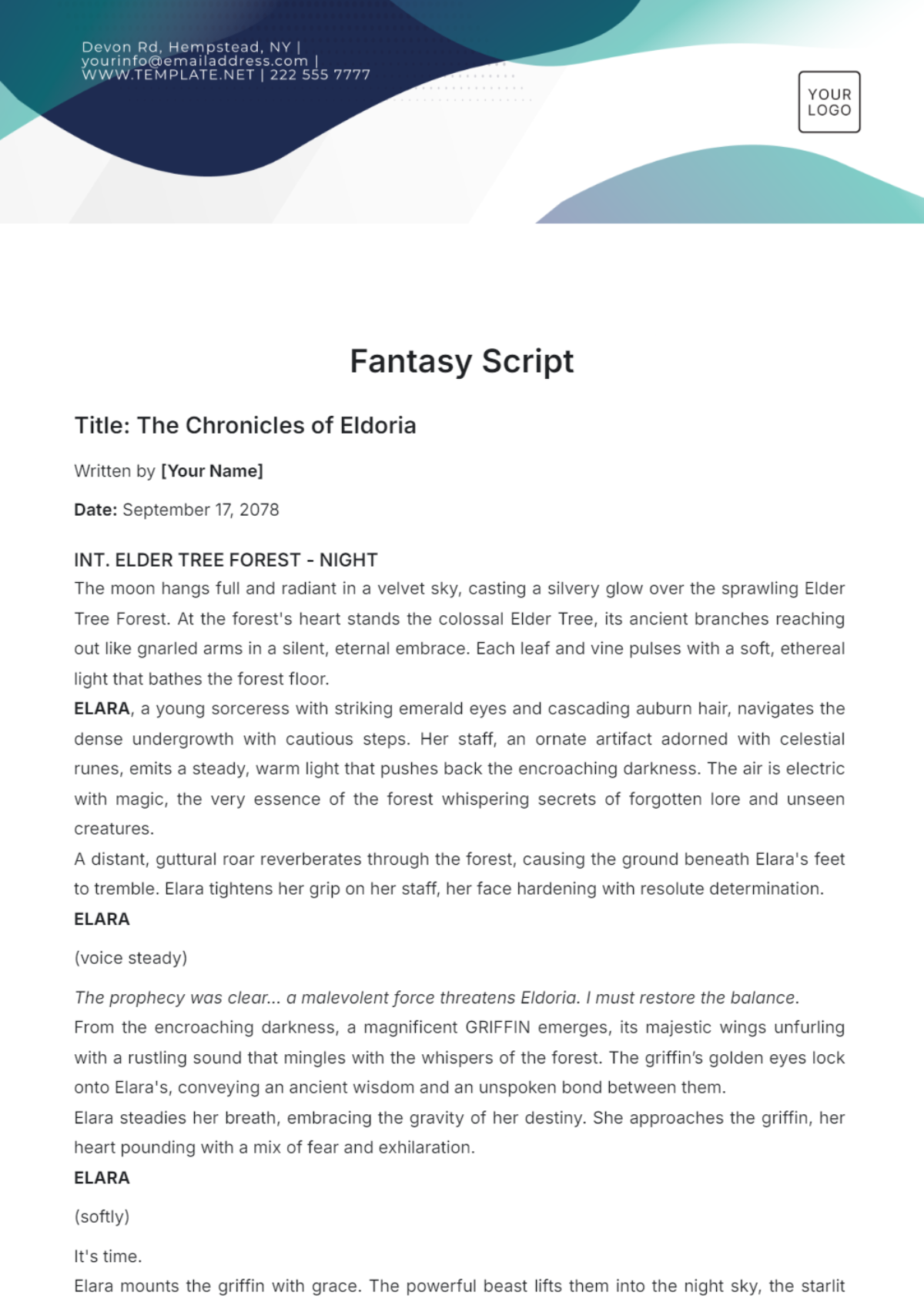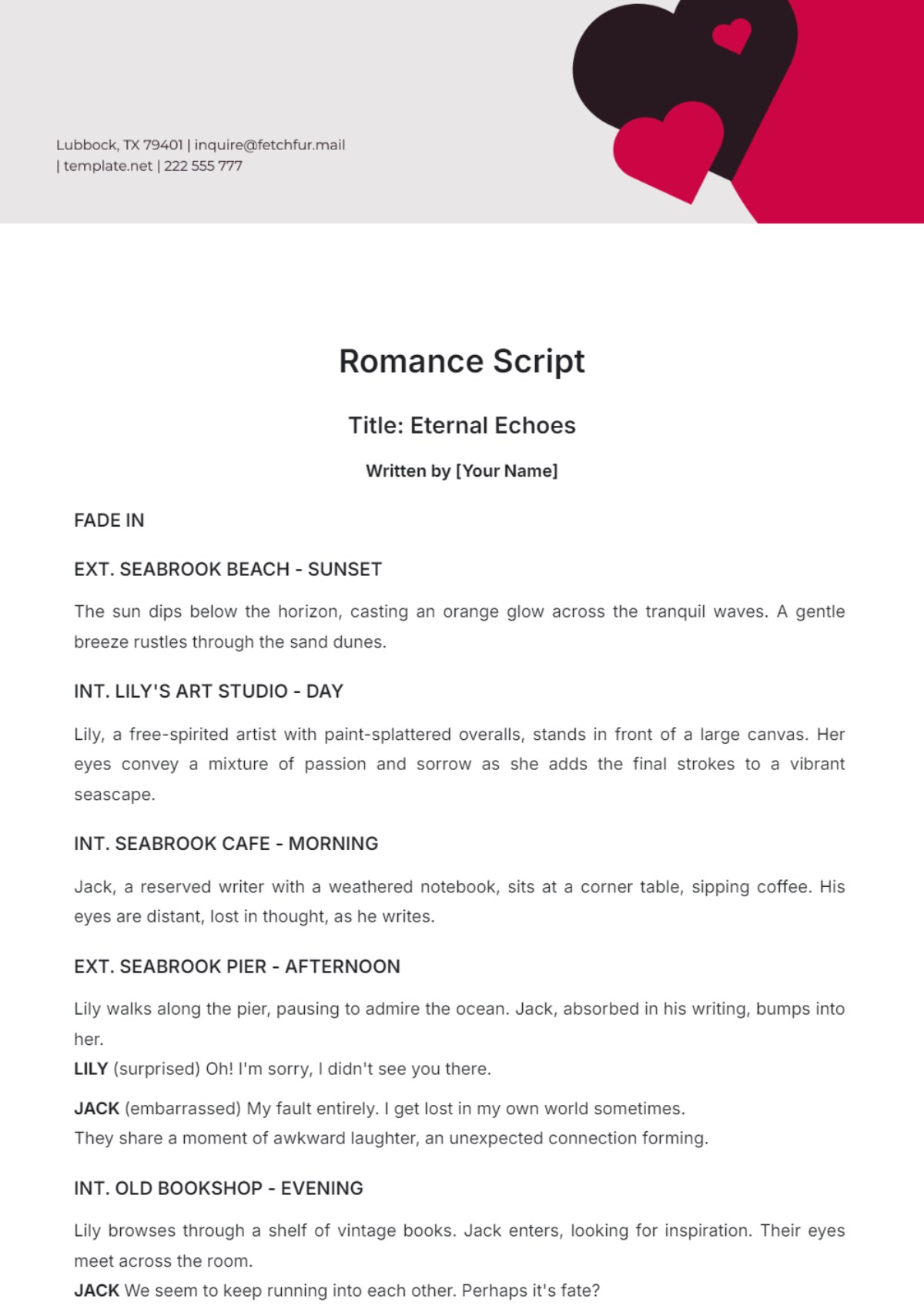Free Script For College Students Template
Script For College Students
Name: [YOUR NAME]
Institution Name: [YOUR INSTITUTION NAME]
Date: [DATE]
Address: [YOUR INSTITUTION ADDRESS]
Email: [YOUR EMAIL]
Phone: [YOUR NUMBER]
Website: [YOUR WEBSITE]
I. Introduction
Welcome to the [EVENT] script template! This template is designed to assist college students in crafting effective and engaging scripts for various purposes. Whether you're preparing for a class presentation, a research symposium, or a club meeting, this template will help you structure your content effectively.
A. Opening Statement
In this section, [YOUR NAME] will provide a brief introduction to the topic or theme of the script. Begin with a captivating hook to grab the audience's attention. For example:
[Hook]: "Good morning, everyone! Today, we're diving into the intriguing realm of [TOPIC]. As [YOUR NAME] from [YOUR COLLEGE NAME], I'm thrilled to guide you through this exploration."
B. Purpose and Objectives
Next, clearly outline the objectives and goals of the script. Define what you aim to achieve through your presentation or discussion. Utilize bullet points to list the key objectives:
[Objective 1]: Provide an overview of [SUBJECT].
[Objective 2]: Engage the audience through interactive discussions or activities.
[Objective 3]: Present key findings or insights.
II. Main Body
In this section, [YOUR NAME] will delve into the main content of the script. Organize your ideas logically and use subheadings to differentiate between different topics or sections.
A. Background Information
Start by providing essential background information related to the topic. Use numbered lists to outline key points:
[Background Point 1]: Define [CONCEPT].
[Background Point 2]: Highlight the significance of [TOPIC].
[Background Point 3]: Share relevant research or data.
B. Key Concepts
Next, explore the core concepts or themes of the script. Break down complex ideas into digestible chunks:
[Concept 1]: Discuss the importance of [CONCEPT].
[Concept 2]: Explore different perspectives on [TOPIC].
[Concept 3]: Present case studies or examples to illustrate key concepts.
C. Interactive Discussions
Engage the audience through interactive discussions or activities. Use checklists to ensure that all necessary materials are prepared:
[Discussion Topic 1]: Facilitate a group discussion on [TOPIC].
[Materials Needed]: Whiteboard, markers, discussion prompts.
[Discussion Topic 2]: Conduct a debate on [ISSUE].
[Debate Format]: Pro-con format with assigned roles.
III. Additional Resources
In this section, provide additional resources or references for further exploration of the topic. Include links to relevant websites, books, or articles:
A. Recommended Readings
[Book Title 1]: Explore in-depth discussions on [TOPIC].
[Article Title 2]: Read insightful perspectives from experts in the field.
[Website Link 3]: Access online resources for additional research.
B. Related Videos
Embed links to related videos or documentaries that complement the content of the script:
[Video Title 1]: Watch a lecture on [SUBJECT].
[Documentary Title 2]: Gain insights from real-world examples related to [TOPIC].
[Educational Video 3]: Learn through visual representations and animations.
IV. Conclusion
Summarize the key points discussed in the script and leave the audience with a memorable conclusion:
[Closing Remark]: "Thank you all for your participation and engagement. As we conclude, let's remember to continue exploring [TOPIC] and applying our knowledge to make a positive impact. Together, we can shape the future!"
